When we arrived in Chile, we thought we would stay for at least 2-3 months. The idea was to head down to the south of Patagonia, and then cross over to Argentina to finish our trip. But something happened during our bike journey through San Pedro de Atacama – we decided to change our plans and explore the northwest of Argentina! ¡Bienvenido a Argentina! And what could be better than a 7-day road trip around Salta to kick things off? Join us in the car for a crazy adventure through splendid landscapes!

- Presentation of Salta, Buena Onda
- What to do in Salta?
- How to get to Salta?
- Accommodation in Salta
- Renting a car in Salta
- Itinerary and map of this 7-day road trip
- Day 1 of the road trip: from Salta to Cachi
- Day 2 of the road trip: from Cachi to Cafayate
- Day 3 of the road trip: around Cafayate
- Day 4 of the road trip: from Cafayate to Purmamarca
- Day 5 of the road trip: Humahuaca and Tilcara
- Day 6 of the road trip: from Purmamarca to San Antonio de los Cobres
- Day 7 of the road trip: from San Antonio de los Cobres to Salta
We took this trip in 2014, but the article was completely revised and updated in January 2025. In this article, many prices are listed in pesos. We’ve tried to update them as well. To give you an idea, during our trip in October 2014, 1 euro was exchanged for about 10 pesos. Today, it’s more like 1 euro = 1030 pesos! And inflation is probably not over yet… In any case, if you notice price changes or have additional information that could be relevant, don’t hesitate to leave us a comment!
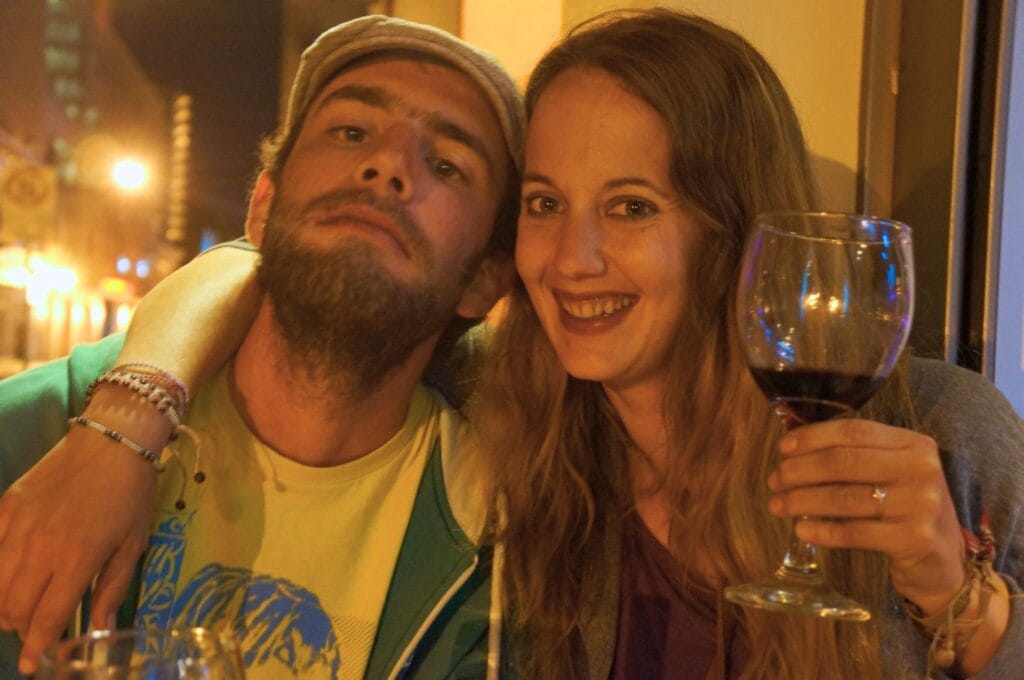
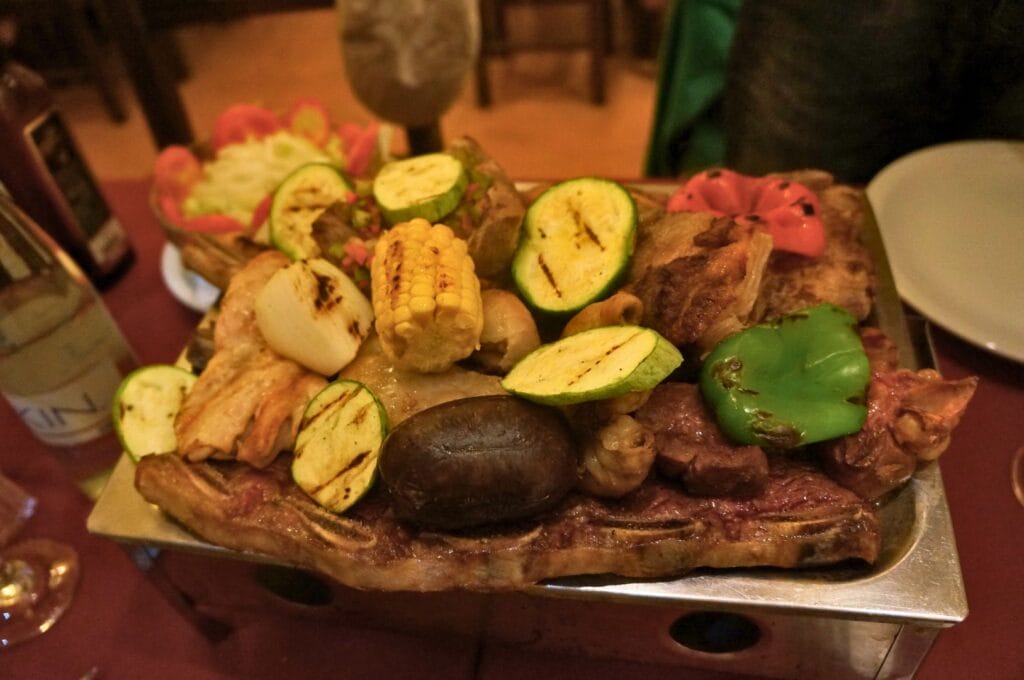
Presentation of Salta, Buena Onda
We were warned beforehand… Everyone we met on the road told us: “You’ll see, in Argentina, there’s something called Buena Onda!“
Well, to say the least, we were not disappointed! We immediately found a fantastic little hostel right in the center of Salta, just two steps from Plaza 9 de Julio. And with joy, we began our wine tasting tour of the area, tried our first parrillada, and indulged in dulce de leche ice cream!
Yes, Argentina is all of this and so much more: delicious cuisine, golden-hearted people, quality hostels, great wine at ridiculously low prices, and breathtaking landscapes! We won’t hide it – we’re falling in love with Argentina!
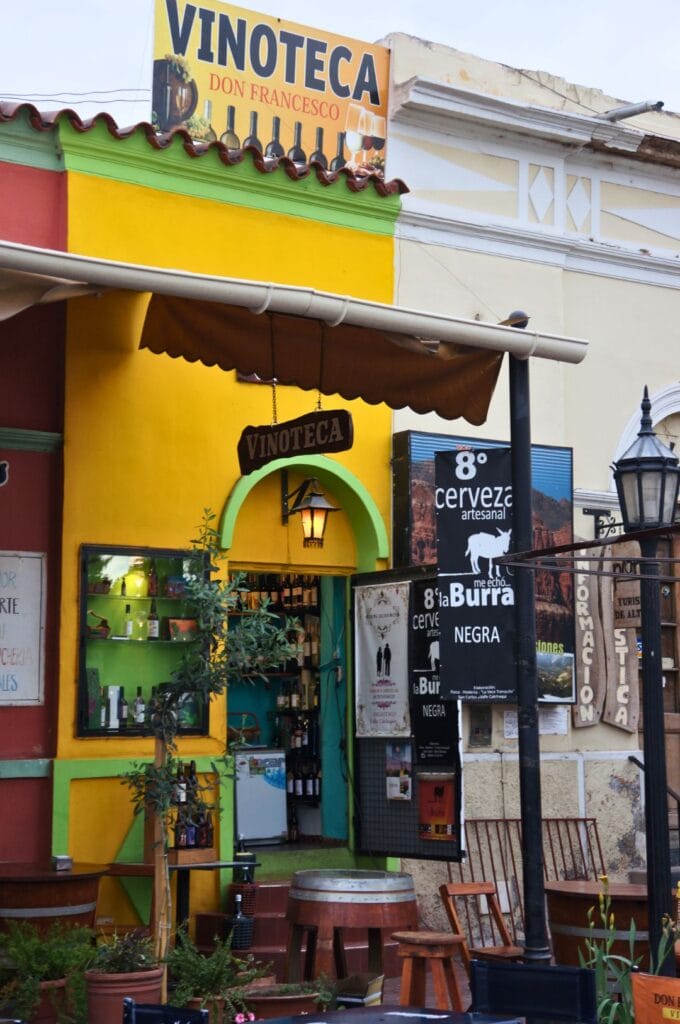
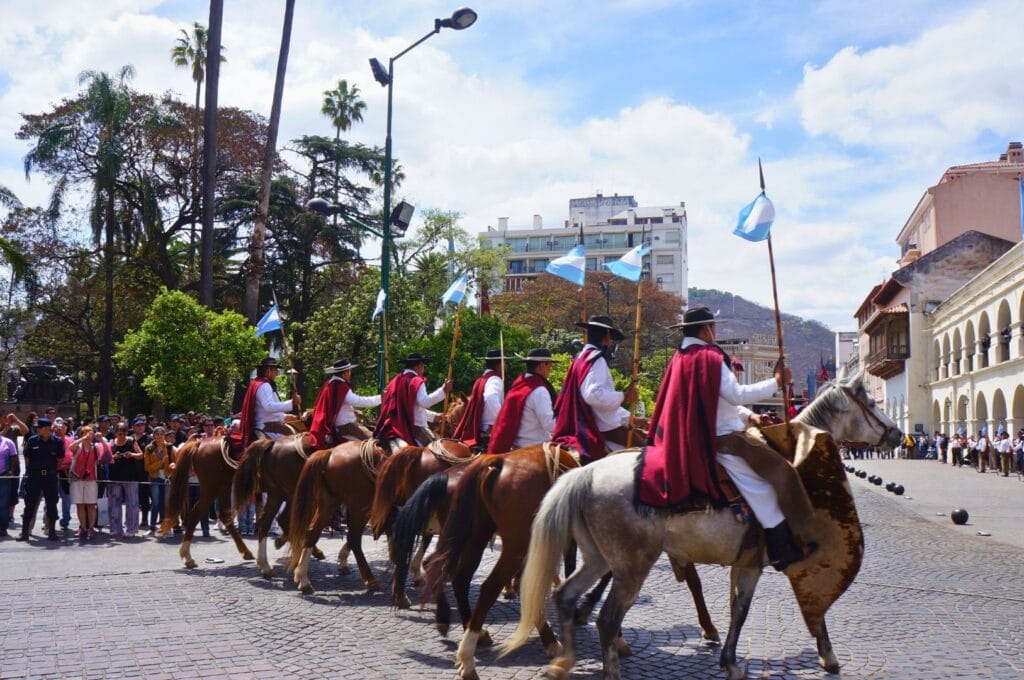
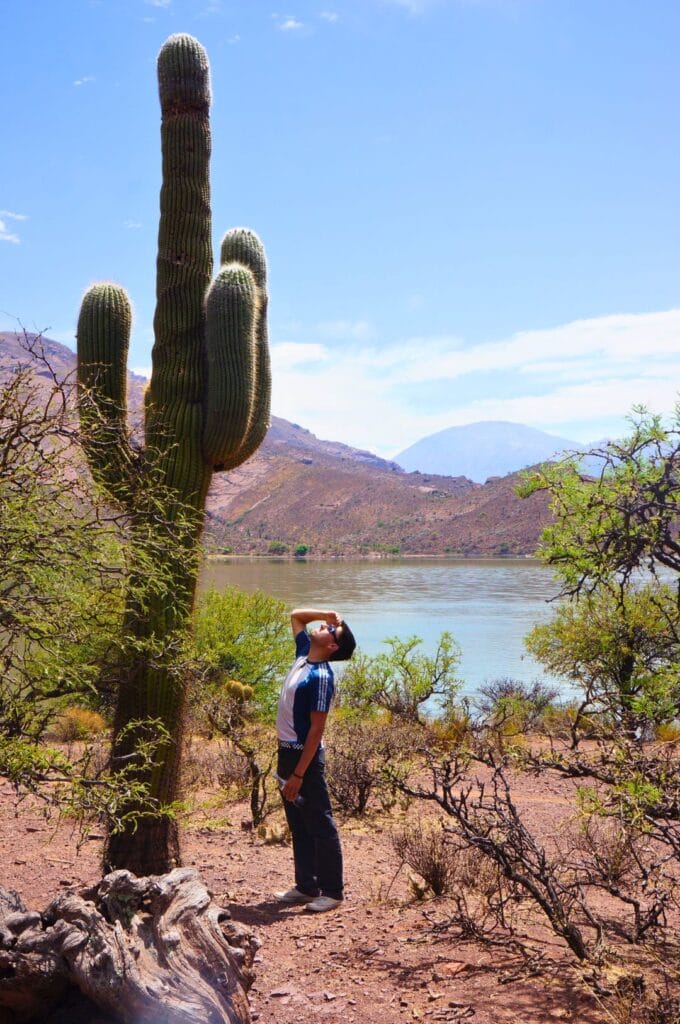
What to do in Salta?
Nicknamed Salta la Linda (Salta the Beautiful), the second-largest city in northern Argentina has an undeniable charm with its colonial buildings. Yes, the surroundings are truly worth it, but a short stop in the city is worth spending a night. Here’s our selection of things to do in Salta. For everything about visiting the surrounding areas, we’ll tell you all about it in the road trip itinerary!
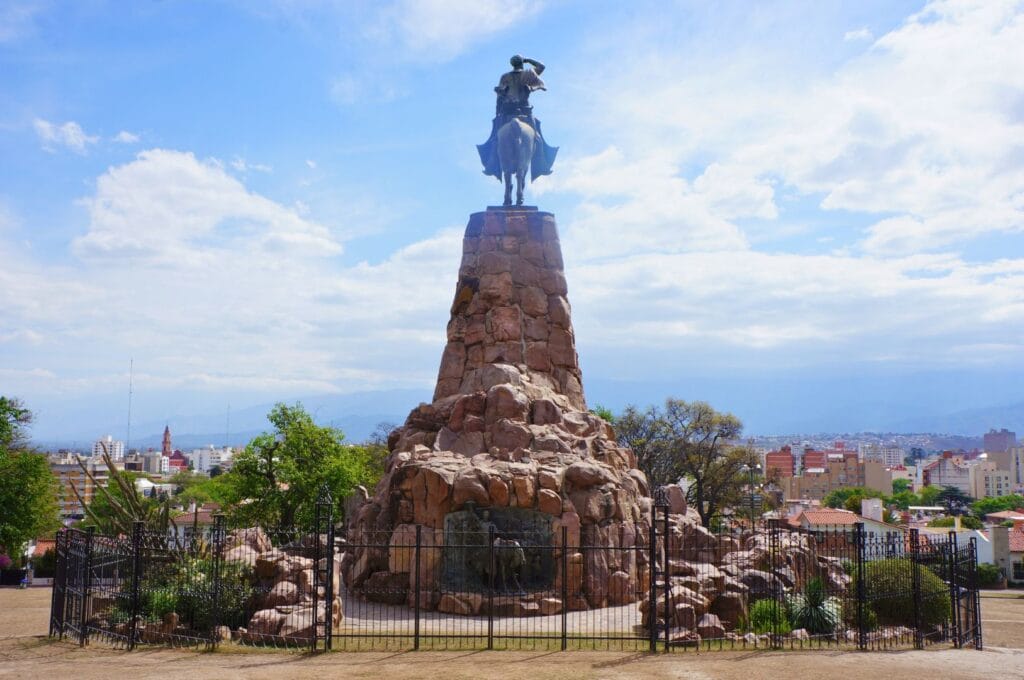
Take a guided city tour
If you’ve been reading us for a while, you know we’re fans of free tours whenever we arrive in a big city. Here, guides offer a tour of the historic center, in Spanish only. The tour is free, and if you’re satisfied, you can tip the guide at the end.
Visit the San Francisco church and museum
You can’t miss a quick visit to the San Francisco Church, one of Salta’s iconic monuments with its colonial architecture and warm colors. Built at the end of the 18th century, it houses a museum that traces the religious history of the region. Entry to the church is free, and the interior is as beautiful as its facade!
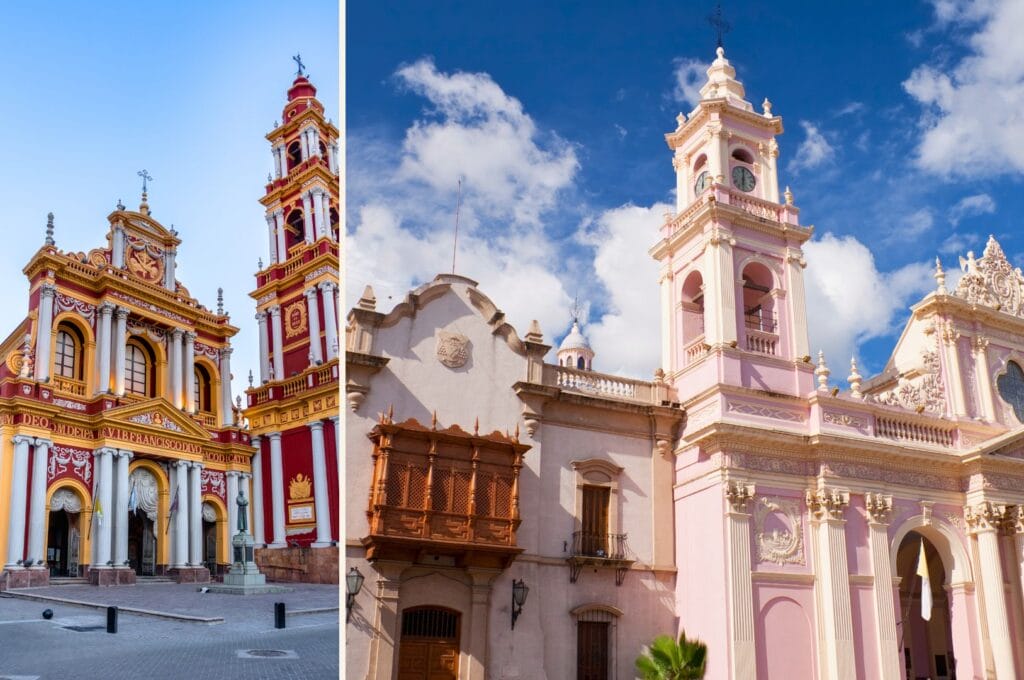
Discover the Salta Cathedral and Iglesia la Viña
Separated by 5 blocks, these 2 monuments are worth a look. Facing the Plaza 9 de Julio, the Roman cathedral with pink tones is simply impressive. The Iglesia la Viña stands out with its pastel colors used for its facade. Inside, blue dominates among the colors rarely used in a church. Their visit is free.
Admire the San Bernardo convent
The San Bernardo convent is the oldest building in Salta. Dating from the late 16th century and rebuilt in 1846, it cannot be visited but is worth a look just for its magnificent carved wooden door and details.
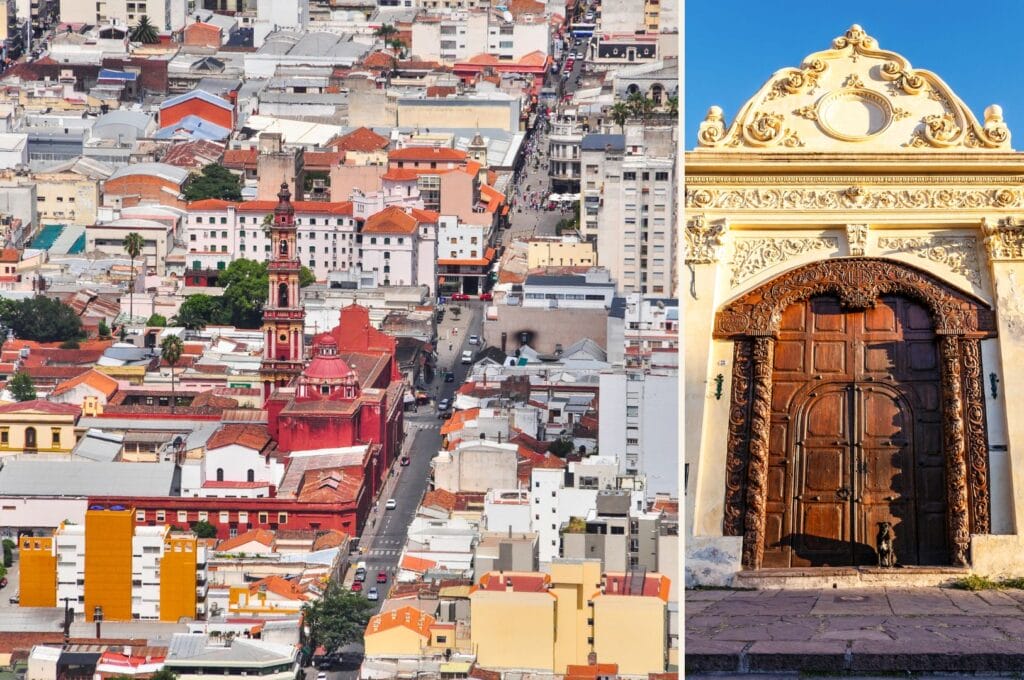
Visit one of Salta’s museums
If you enjoy exploring museums, you’ll be delighted in Salta! Here’s our selection to embrace the culture of the region:
- Museo de la ciudad: In one of Salta’s oldest houses, this free museum traces the city’s history.
- Museo de Arqueología de Alta Montaña (MAAM): The High Mountain Archaeological Museum is the city’s most popular. It details archaeological discoveries to immerse you in Inca culture. Its peculiarity is housing the famous Llullaillaco children, 3 Inca child mummies discovered at the top of the Llullaillaco volcano. The ticket price is 12,000 pesos per person.
- Museo de Arte Contemporáneo: A visit to Salta’s contemporary art museum allows you to dive into Argentine art and learn more about local artists. Admission costs 700 pesos each.
Strolling through markets
Northern Argentina is a region rich in gastronomy and craftsmanship. It’s an opportunity to wander through different markets to immerse yourself in local culture.
- Mercado San Miguel: This is the covered market where locals shop. You’ll find everything here: vegetables, flowers, clothing! Don’t miss trying the famous empanadas! By the way, you’ll find them everywhere throughout the road trip.
- Crafts markets: To see the best of Argentine craftsmanship, visit the mercado artesanal de Salta on San Martin Avenue, or closer to the center, the feria artesanal at Plaza Güemes, 4 blocks from 9 de Julio square.
Gain height on Cerro San Bernardo
To gain some height, we recommend going to the top of Cerro San Bernardo, at 1,450 m altitude. The view of Salta and the region is panoramic. You have two ways to access it: the easy and the sporty way.
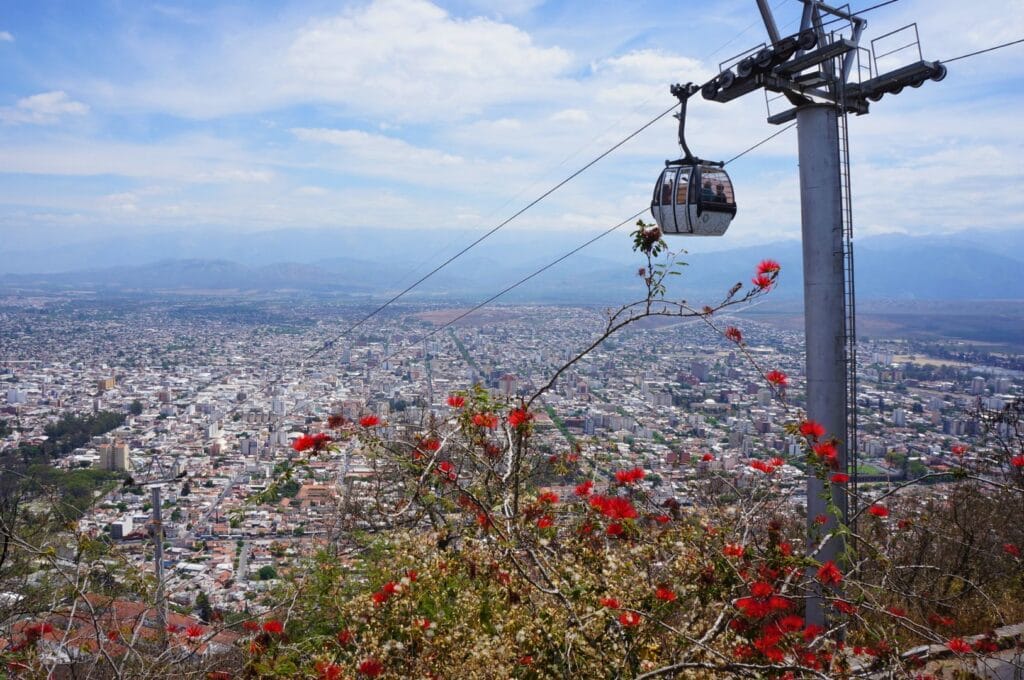
You can ask a taxi to drop you at the summit. Alternatively, the San Bernardo cable car takes you to the top in 8 minutes. To take it, go to the charming San Martin Park. The price is 12,000 pesos each for a round trip.
On foot, prepare to climb the 1,071 steps to the top! The start is next to the Anthropology Museum and behind the Güemes monument. It takes about 1 hour to cover the 1.2 km to the top.
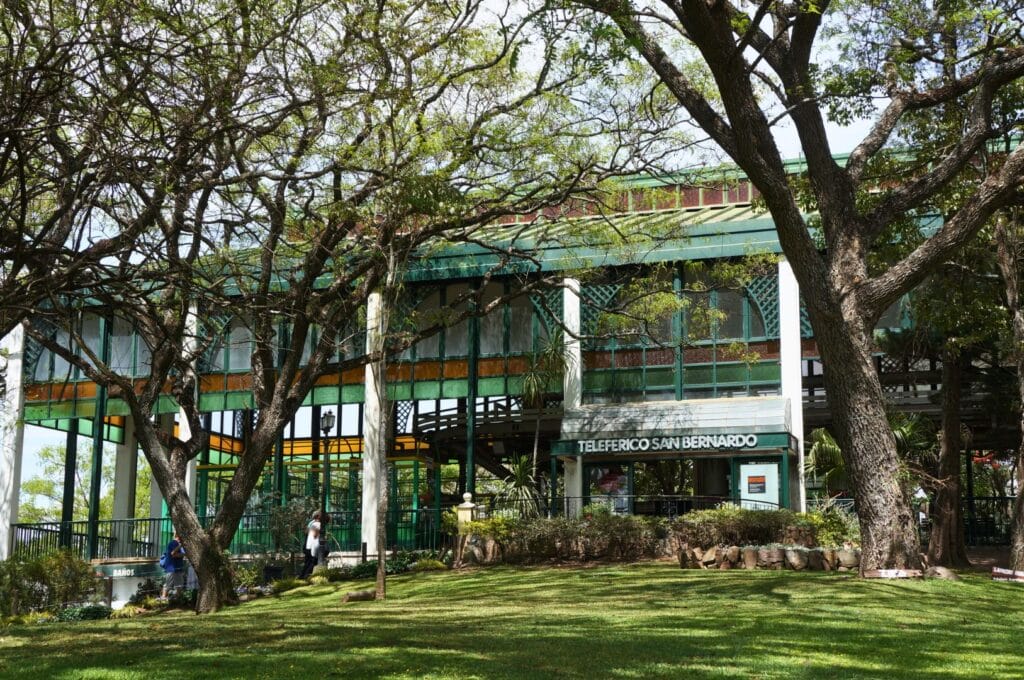
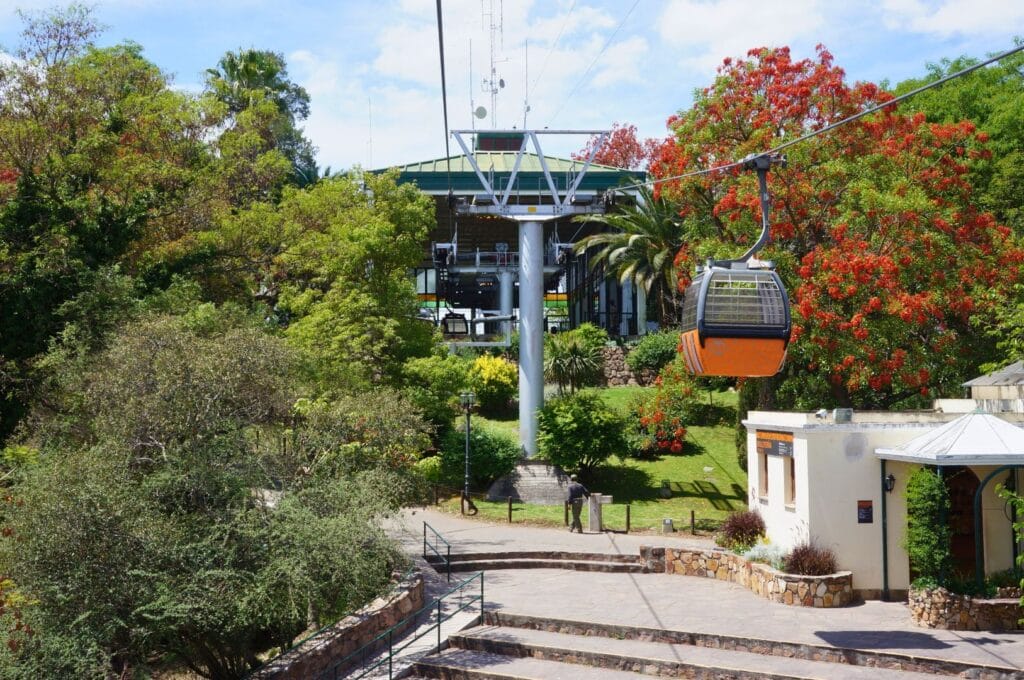
Take the Train to the Clouds (Tren a las Nubes)
One of Salta’s flagship activities is taking the Train to the Clouds. On paper, it sounds great: a panoramic train journey on an old railway through incredible Andean landscapes. But in reality, it’s quite expensive. You pay 170 euros for almost 3 hours of bus to reach the San Antonio de los Cobres station in the northeast of Salta. You’ll have a mediocre breakfast there, then board the train for a 44 km round trip taking 2.5 hours. Ultimately, the most interesting part is the La Polvorilla viaduct and its viewpoint.
So, if you already have a car and this activity interests you, we recommend going directly to San Antonio de los Cobres to avoid paying for the transfer from Salta. The ticket price is 115 euros. You’ll board at noon for 2.5 hours of train. As you’ll read below, the landscapes to San Antonio are already worth the trip. So if you’re on a road trip, we wouldn’t recommend doing this activity by train.
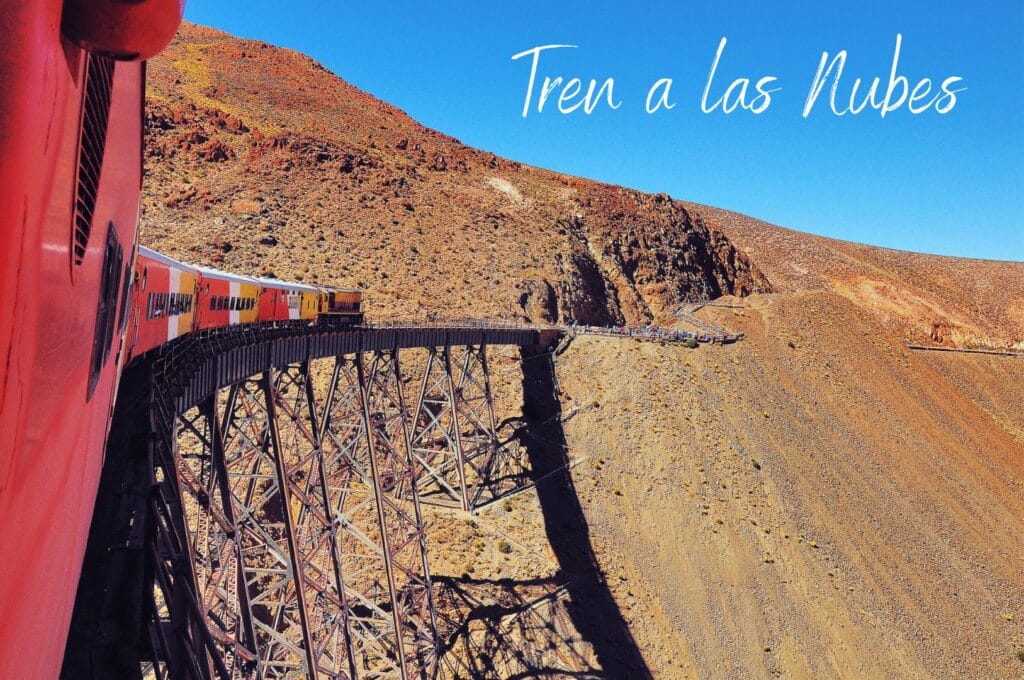
Day excursions
If the idea of a 7-day road trip doesn’t appeal to you, don’t worry: there are options to visit the highlights of the two loops around Salta! Here are the excursions we recommend for their good value:
- Humahuaca and Purmamarca: A guided day tour to the north, taking you to see the magnificent 14-color hill (Hornocal) and its little sister, the 7-color mountain.
- Salinas Grandes: Definitely do this if you’ve never seen a salt desert! This tour shows you the incredible salt flat while also visiting Purmamarca and the Cerro de los Siete Colores.
- Cafayate and Quebrada de las Conchas: How can we talk about Salta’s surroundings without mentioning Cafayate and its bodegas? This excursion takes you through the stunning Quebrada de las Conchas and includes a wine tasting in Cafayate.
- The southern loop in 2 days: From your Salta hotel, discover the southern loop over 2 days towards Cafayate and Cachi. The program includes Quebrada de las Conchas, wine tasting in Cafayate, visiting the charming Cachi village, and stops in Los Cardones National Park.
Civitatis even offers to do both loops, all from Salta. The price isn’t excessive, and you just have to let yourself be guided over 3, 4, or 5 days!
How to get to Salta?
With over 500,000 inhabitants, Salta is the 8th largest city in Argentina. As such, the transportation network is well-developed to reach the provincial capital, the starting point of the two road trip loops.
From San Pedro de Atacama
From Atacama, we took an overnight bus to reach Salta. The only companies offering this route are Andesmar and Pullman. The main difference is that Pullman tickets are slightly more expensive than Andesmar. As for the cost, expect to pay at least €60 per person for a 10.5-hour journey. To compare prices and book your ticket, we recommend this website.
From Buenos Aires
From the Argentine capital city, you can reach Salta by bus or plane. By land, tickets cost a minimum of €110 per person for a cama night bus and a 22-hour journey. By air, the price is similar: around €100 for a 2-hour flight. Be sure to compare bus and flight prices from different companies.
From Mendoza
More than 1,000 km separate Mendoza from Salta. Here too, you can choose between by bus or plane. By road, the journey takes 20 hours in a cama bus, with tickets starting at €120 per person. By air, the low-cost airline JetSmart offers flights starting at €80 for less than 2 hours of travel.
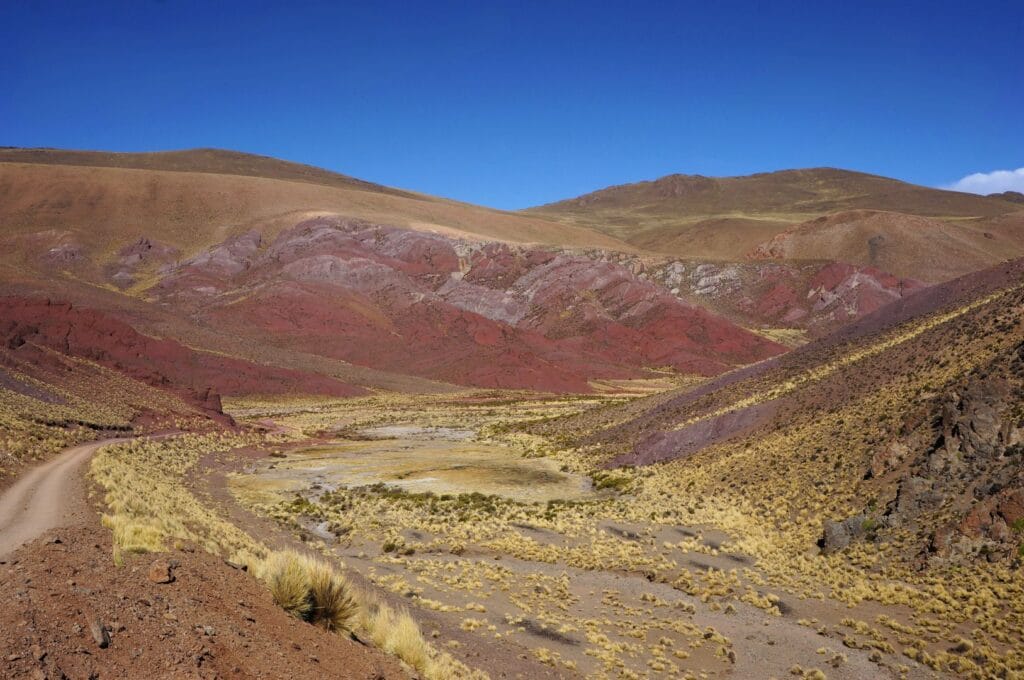
This article contains affiliate links to partner sites. When you use our links to book accommodation, a car, or an activity, you don’t pay anything extra, but we get a small commission. This helps us to offer you free, independent, and ad-free content. Thank you for your support!
Accommodation in Salta
We were lucky. We stayed 3 nights in the city center at Ferienhaus Hostel Salta. The dormitory price is one of the cheapest in the area, the hostel is clean and well-located, with good Wi-Fi, breakfast included with some rooms, and a kitchen available. In short, we can only recommend this establishment!
Other good accommodation options include:
- Hostel Marilian: Located in the city center, this modern hostel is ideal for solo travelers or couples. The property is very well-maintained, the prices are more than reasonable, and the breakfast is excellent.
- La Cara Oculta de Salta: This stunning historic house has been converted into spacious guest rooms, offering a perfect, peaceful stay despite being right in the heart of the city. The breakfast is outstanding, and the staff goes above and beyond to ensure a great experience.
- If you already have a car, Buen Descanso is perfect for escaping Salta’s city center. This apartment features a huge terrace with incredible views of the surrounding mountains.
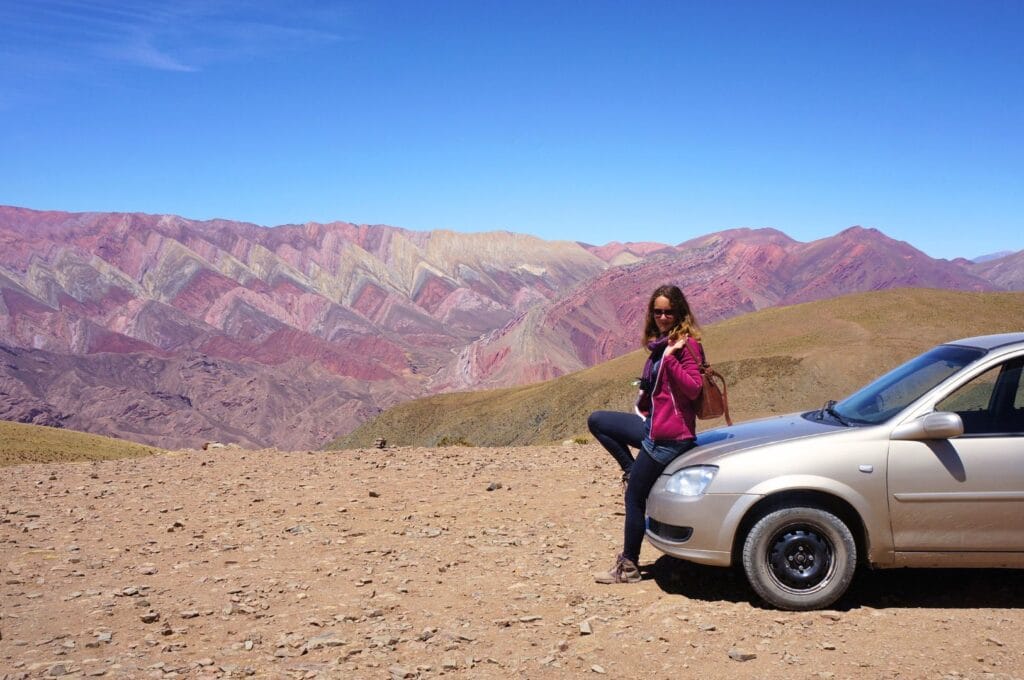
Renting a car in Salta
To fully enjoy the surroundings of Salta without public transport constraints or the obvious inconveniences of organized group tours, we decided to explore the area by renting a car! A car guarantees the freedom to go where you want, when you want, and stop as often as you like. It was the first time during our world tour that we did a road trip by car. Result: it was the best decision to explore this part of northern Argentina! Plus, since we’re traveling with Baptiste, Fabienne’s best friend and Benoit’s cousin, we can split the cost three ways, which is cheaper than organized tours if you’re 2 or more.
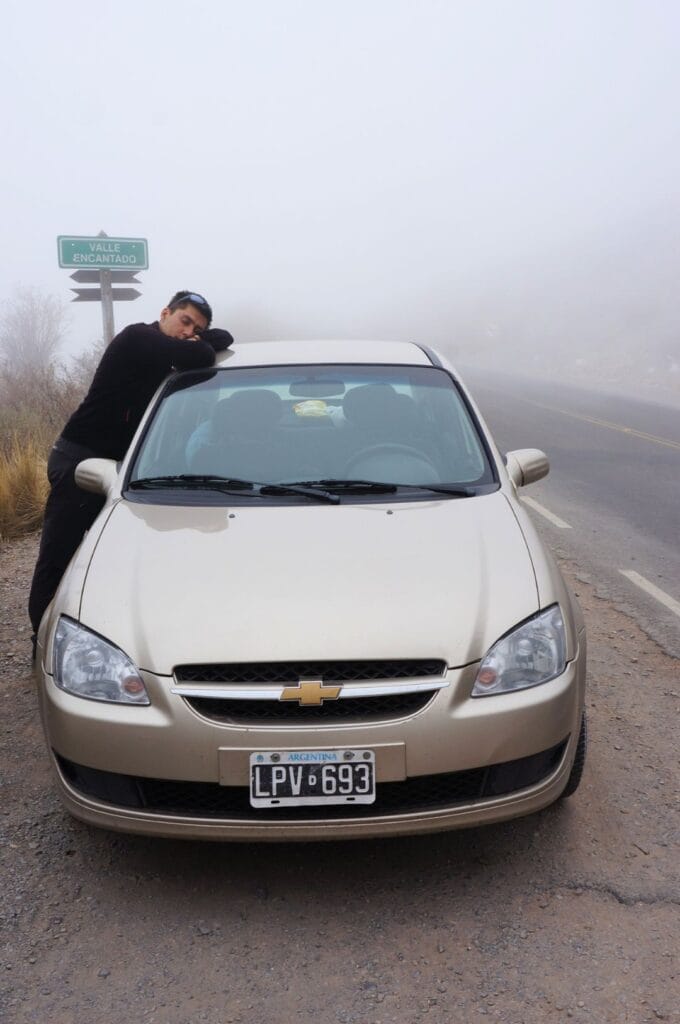
In Salta, most car rental agencies are on Buenos Aires Street, starting at the corner of Plaza 9 de Julio, just south of the Catedral Basílica de Salta. We rented our car from Noa Rent a Car, where we found the best price. However, based on recent reviews, it seems their quality has significantly declined. It’s worth comparing agencies (Das Rent a Car has a good reputation) and Rentalcars. Prices always depend on the season and demand. To give you an idea, the average daily rental cost is at least €39.
Tip: Carefully inspect the vehicle for any impacts/defects and report them to the agency if different from those mentioned. We didn’t choose a 4×4, and our itinerary works well with a small car, despite some chaotic passages.
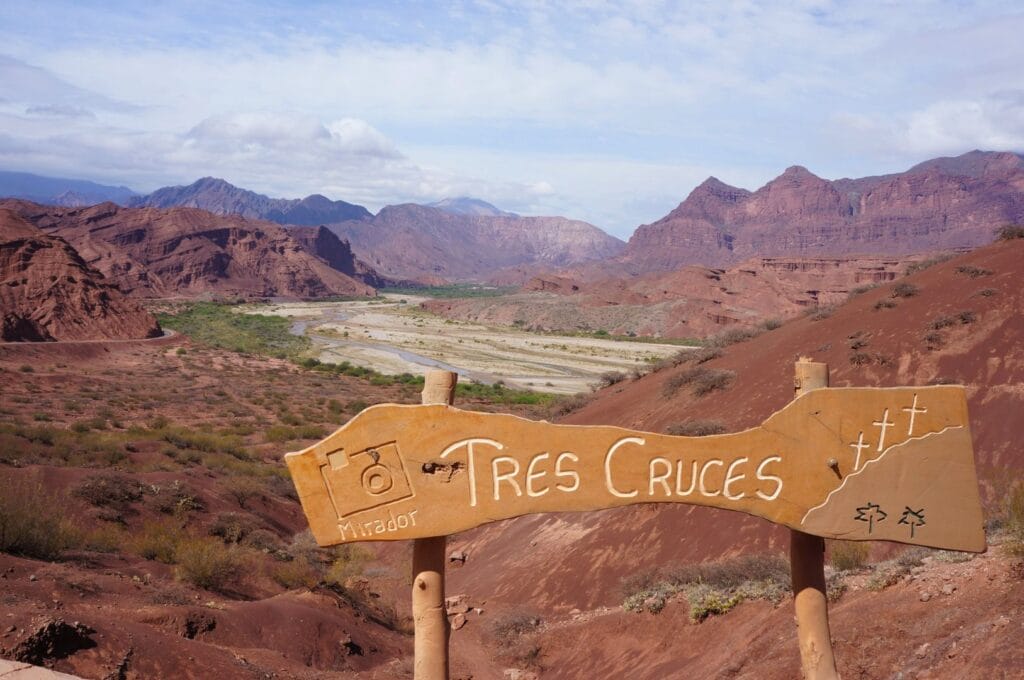
Itinerary and map of this 7-day road trip
Before diving into the details, here’s an overview of this epic 7-day road trip: 3 days exploring the southern loop from Salta and 4 days in the northern loop. And if you had to choose just one: north or south loop? Whew, that’s a tough decision! The northern loop is truly impressive in terms of landscapes, with the Quebrada de Humahuaca and the Hornocal viewpoint. The southern loop is fantastic for wines, and the Quebrada de las Conchas is absolutely stunning… Plus, the road is a bit better maintained in the south. In short, it’s a close match!
Note: If you’re not used to altitude, definitely read our tips to prevent mountain sickness! This road trip will take you over 4,000 meters in some sections.
If you prefer to explore these loops using public transportation or through organized tours, it’s absolutely possible. However, you won’t be able to visit all the sites, especially by bus. We’ve detailed the day trips earlier.
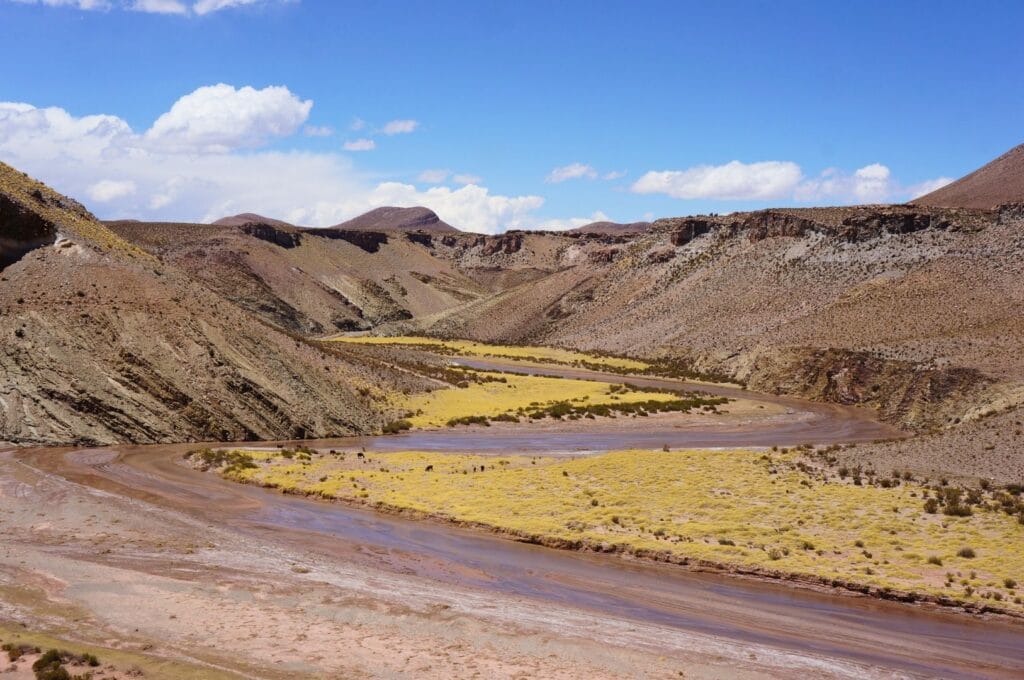
The Southern Salta loop in short
- Day 1: Salta-Cochi, 159 km, 6 hours (Valle Encantado, Piedra del Molino, Los Cardones National Park…)
- Day 2: Cochi-Cafayate, 161 km, 6-7 hours (Laguna de Brealito, Quebrada de las Flechas)
- Day 3: depending on whether you want to do only the north loop or continue to the north loop:
- option 1: Cafayate-Salta (200 km, 4 hours)
- option 2: Around Cafayate + day 4 Cafayate-Purmamarca (350 km, 8 hours)
The direction of the loop doesn’t matter much. However, check the weather to ensure good conditions for days 2 and 3 (or days 1 and 2 if you’re going east to west), which are the most impressive in our opinion. If you’re only doing the southern loop or have already done the northern loop, 3 days are enough to see everything without rushing. If, like us, you’re going directly to the northern loop, it’s best to do the southern loop in 4 days. This way, you’ll have more time to enjoy the Quebrada de las Conchas instead of rushing to reach Purmamarca. And given the beauty of this section, that would be a real shame!
The Northern Salta loop in short
- Day 5: Around Purmamarca (Quebrada de Humahuaca, Serrania de Hornocal, Tilcara…)
- Day 6: Purmamarca-San Antonio de Los Cobres, 160 or 260 km, 3 ou 5 hours (Cuesta de Lipán, Salinas Grandes, La Polvorilla viaduct…)
- Day 7: San Antonio de Los Cobres-Salta, 170 km, 2 hours 40 minutes (Tastil ruins, Quebrada del Toro…)

Our road trip map Around Salta
Find all the points of interest mentioned in this article on the map below :). You’ll notice that to connect the two loops, you’ll need to pass through Salta. Regardless of the order or direction, we strongly recommend going through Salta rather than taking Ruta 40 between San Antonio de los Cobres and Cachi. This section is quite dangerous, so it’s better to take a detour on safer roads!
We focused on these two loops, but it’s possible to extend this road trip or replace one of the loops with a round trip to Tolar Grande village. Along the way, you’ll see several salt flats, each more impressive than the last. It’s a remote, hostile area that reminds you of the Atacama or Uyuni salt deserts.
Day 1 of the road trip: from Salta to Cachi
We set out early from Salta. This day promises to be packed with beautiful landscapes and dream-like roads! The southwestern route will take us through the Enchanted Valley and up to a mountain pass at 3,457 m, crossing Los Cardones National Park.
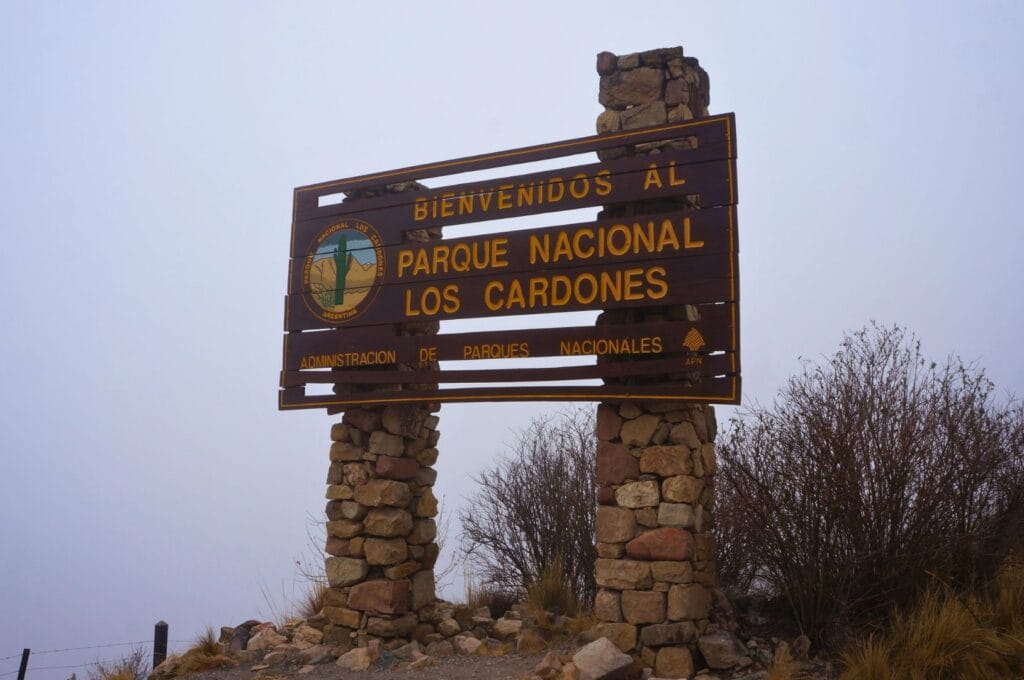
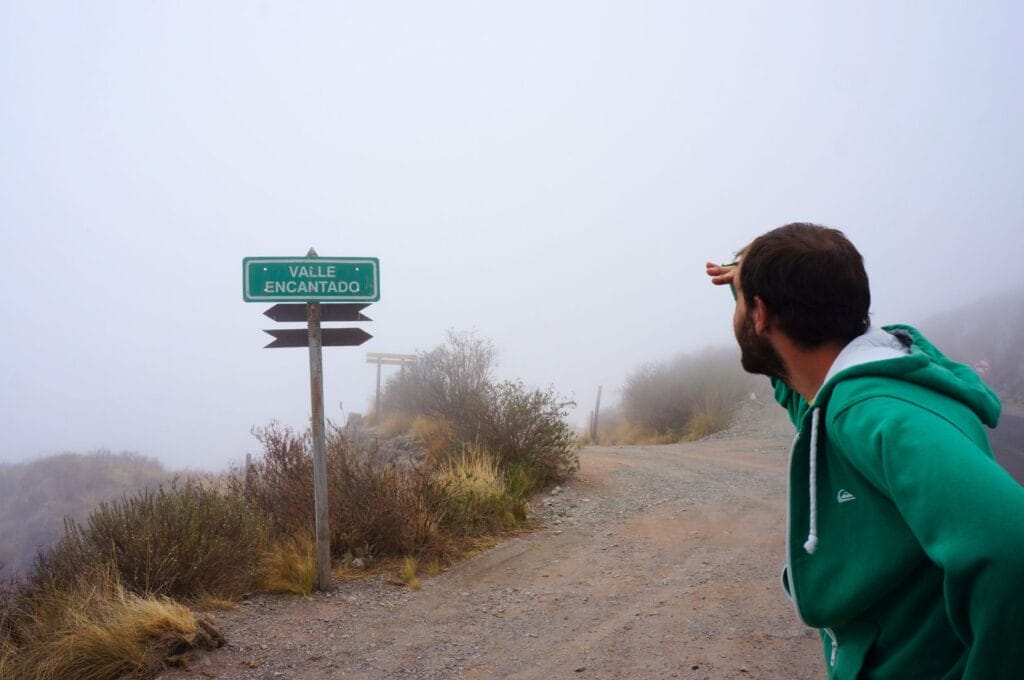
Valle Encantado
Unfortunately, we can’t tell you much about the Quebrada del Escoipe and Cuesta del Obispo. With the winding roads and elevation changes, we would have had beautiful viewpoints… But Mother Nature had other plans that morning. We searched for the Enchanted Valley but found only fog… What a shame! Fortunately, the rest of the route was more forgiving! Once we passed the mountain pass and the mirador Piedra del Molino with its San Rafael chapel, we entered Los Cardones National Park. Like magic, the fog and clouds seemed held back by the mountains! We could enjoy the brilliant sunshine for a picnic and take some photos of this journey towards Cachi!
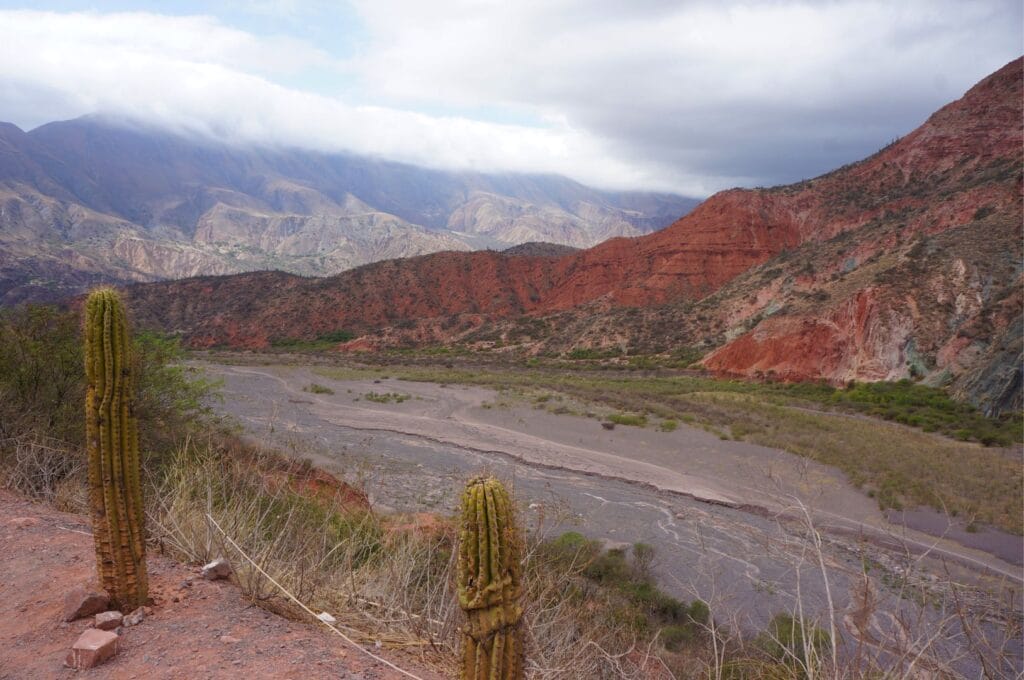
A breakdown incident
Along the rest of the route, we were treated to stunning views between the mirador Ojo del Condor, the Recta del Tin Tin, and the cacti…
On the way, we came across a lady by the roadside struggling to change her tire. Without hesitation, my two male companions jumped into action. But what can you expect? Benoit knows how to program websites, and Baptiste is an engineer. Let’s just say we had to leave this poor lady to her fate. In our defense, the lady didn’t have the right key to remove her tire, and her jack was as old as Methuselah! And since we only had a Swiss Army knife, we weren’t exactly helpful… We can take comfort in knowing a tow truck was on its way.
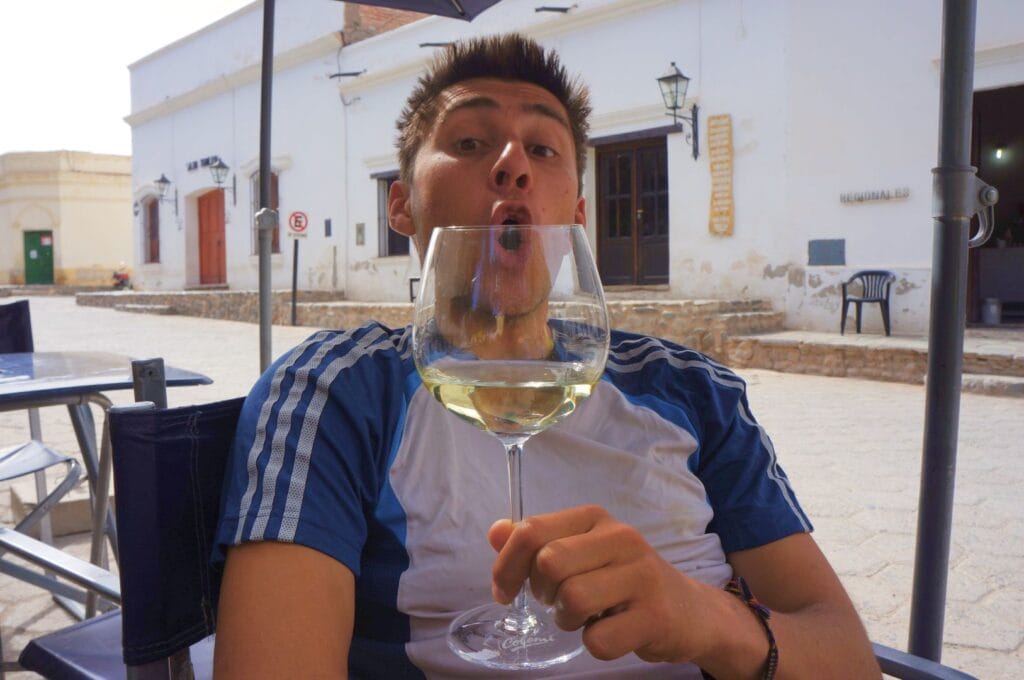
We arrived safely in Cachi, an adorable village with its white houses and enjoyed the end of the day with a little glass of wine (obviously) on the terrace. If you feel like it, head to the mirador Norte viewpoint for a 360° view of Cachi and its surroundings. You can walk there, it’s just 1 km from the 9 de Julio square.
- Distance between Salta and Cachi: 159 km, with about 40 km on unpaved roads. Allow 6 hours for the trip with photo stops.
- Accommodation in Cachi: We stayed at the Nevado de Cachi hotel, on the main street (Route 40), just before the 9 de Julio Square, and we recommend it! The room is clean, the small patio is very pretty, the wifi is decent, and breakfast is included. We took a double room with a private bathroom for good value. Compare hotels in Cachi on Booking. If you have camping equipment, the municipal camping in Cachi is well-equipped, and for a more remote location, we suggest the Río Cachi camping, located west, along the Río Las Trancas.
Day 2 of the road trip: from Cachi to Cafayate
Our small southern Salta loop continues towards Cafayate, on what is called the Wine Route (Ruta del Vino), a section of the famous Route 40!
Laguna de Brealito
From Cachi, we take a dirt road towards the village of Molinos. We stop for a few minutes at the Iglesia de la Puerta La Paya, the church of La Paya village. Then we see a sign indicating a lagoon. We think: “Great, a little detour to see a lagoon!” Naive little us…
In the end, the small detour from Seclantás village (if you have time, take a look at the pretty pink Iglesia Nuestra Señora del Carmen) turns into a 2.5-hour roundabout on a terrible road. But once we reach Laguna de Brealito, we’ve already forgotten the bumpy ride! As rough as the winding road is, it offers truly magnificent landscapes!
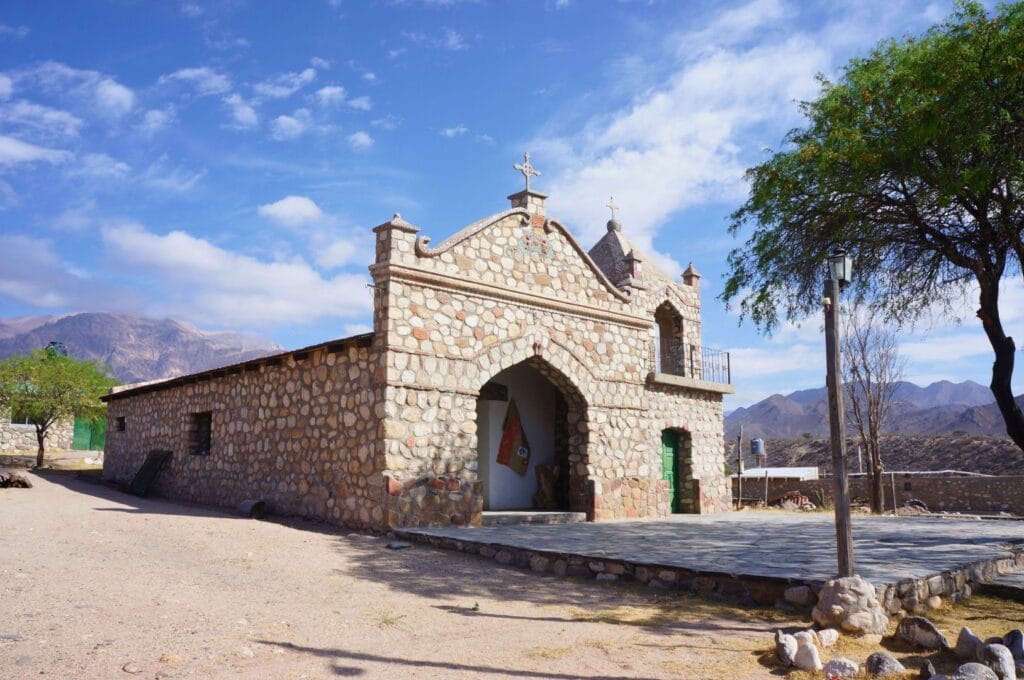
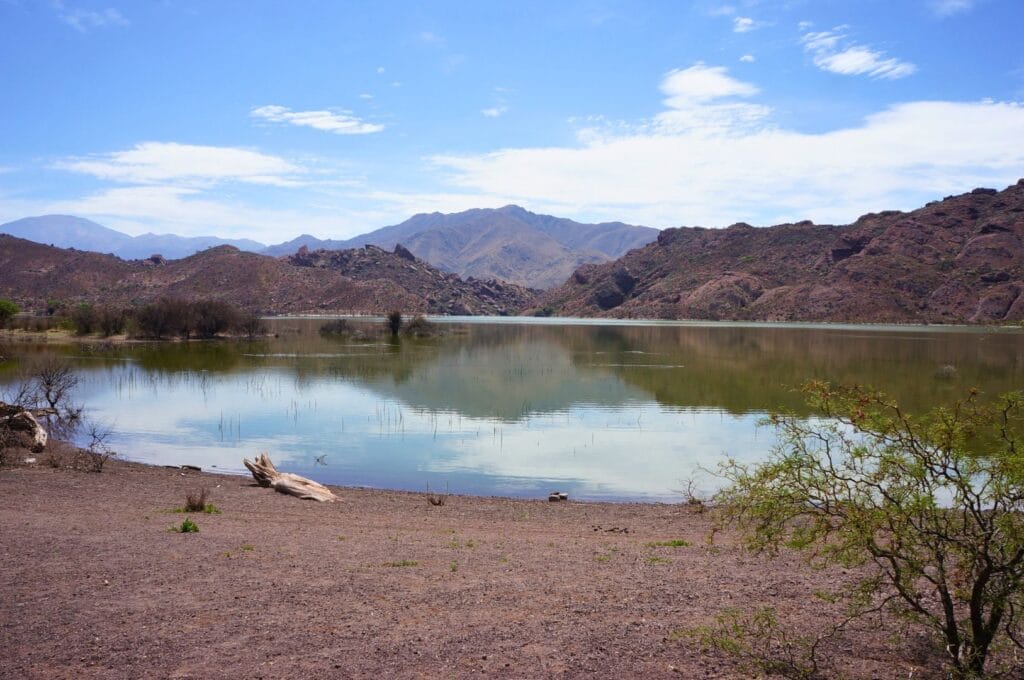
Quebrada de las Flechas
After a quick lunch in Molinos, we continue our route towards Cafayate. The road condition doesn’t improve much, but the landscapes – wow! They’re spectacular!
On the menu for the end of the day: a passage through the heart of Quebrada de las Flechas (Arrow Gorge), desert landscapes galore, cacti, and mini-tornados forming in the sand… Don’t miss the mirador El Ventisquero for a simply incredible panorama!
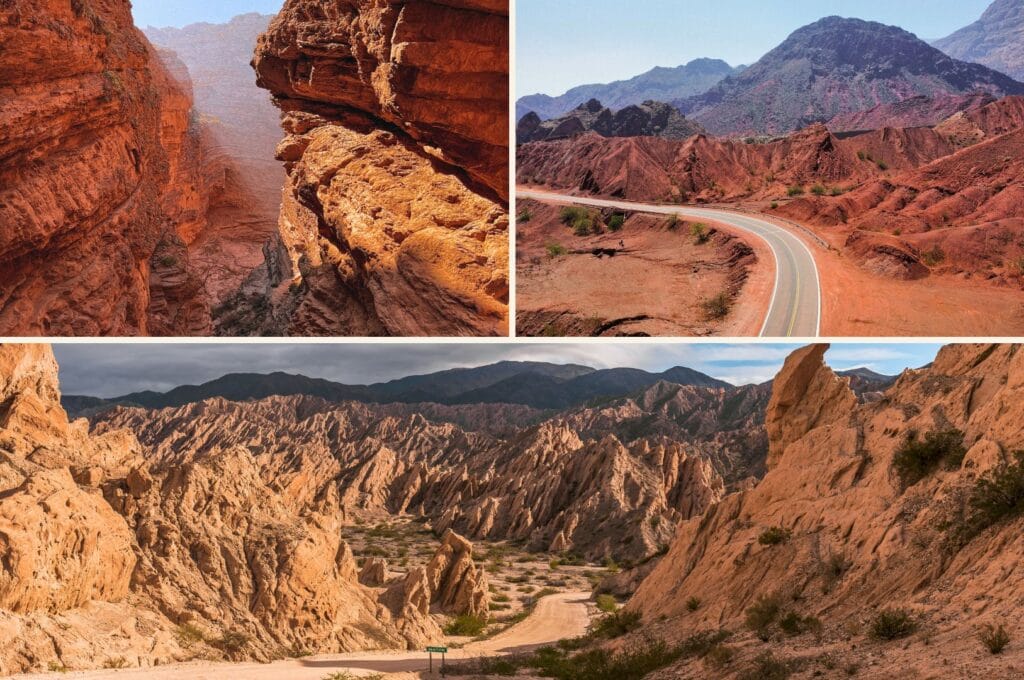
At this point, we wondered what the people who called this the Wine Route were thinking. After 8 hours of driving, not a single grapevine in sight!
Arrival in Cafayate
Further along, a stream appears in this desert spectacle, and before we realize it, we’re in a verdant plain, with vineyards as far as the eye can see! Woohoo! Let the bodega and vineyard tour begin!

- Distance between Cachi and Cafayate: about 161 km (add about 40 km if you want to go to Brealito Lagoon). Allow 6-7 hours for the trip with photo stops. The road is generally OK, but it’s unpaved the entire way, except for the last 30 kilometers to Cafayate, which are paved.
- Linguistic note: Cafayate is pronounced “Ka-Fa-Cha-Té” ;).
- Sleeping in Cafayate: We found a double room with a private bathroom at Portal de las viñas hostel, breakfast is extra. We have nothing to say about cleanliness or reception, but today its value for money is not as good as before. We recommend looking at Hospedaje La Arcadia for a double room and breakfast in the center, or Cielito Lindo, a well-located hostel offering dormitory beds and double rooms with breakfast included, a living room, and a shared kitchen. For campers, you can camp at the exit of Cafayate, at the Luz y Fuerza Union Salta camping (7000 pesos for 2).
Day 3 of the road trip: around Cafayate
Imagine two world travelers passionate about good wine who haven’t tasted a truly remarkable vintage in 14 months, suddenly dropped into one of the world’s best wine regions. Cafayate is basically Bacchus’s paradise, and we definitely couldn’t just spend one night here! We decided to take the car in the morning (before happy hour, of course!) to first explore the magnificent Quebrada de las Conchas.
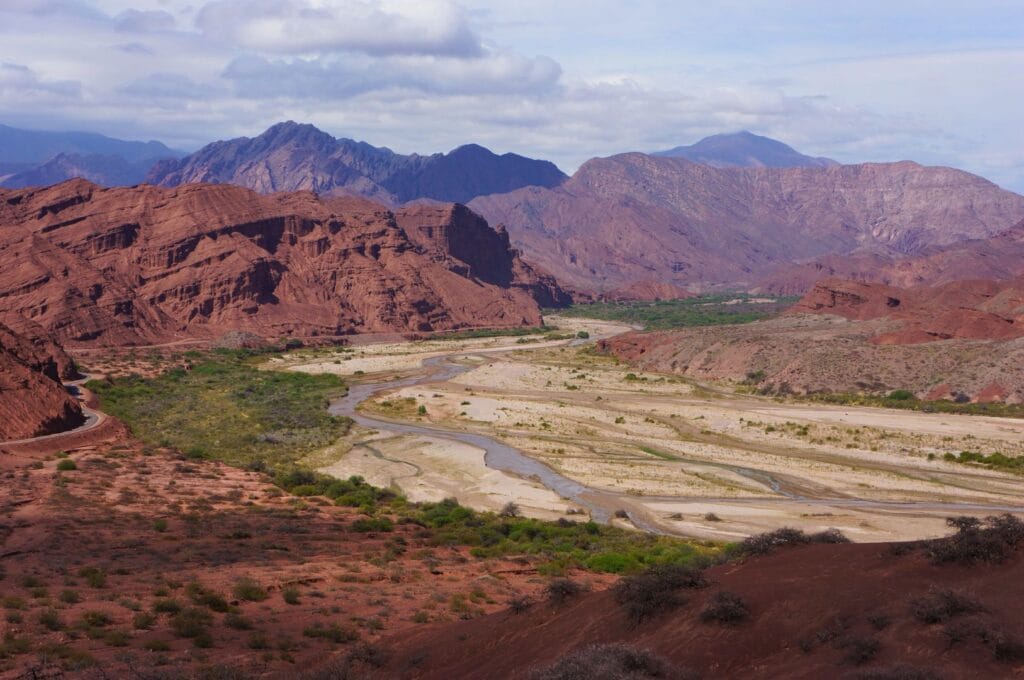
Quebrada de las Conchas
If you’re coming directly from Salta, you won’t be able to miss it! Route 68 from the provincial capital passes right through the heart of Quebrada de las Conchas! Honestly, it would be a real shame to pass through by bus without being able to stop…
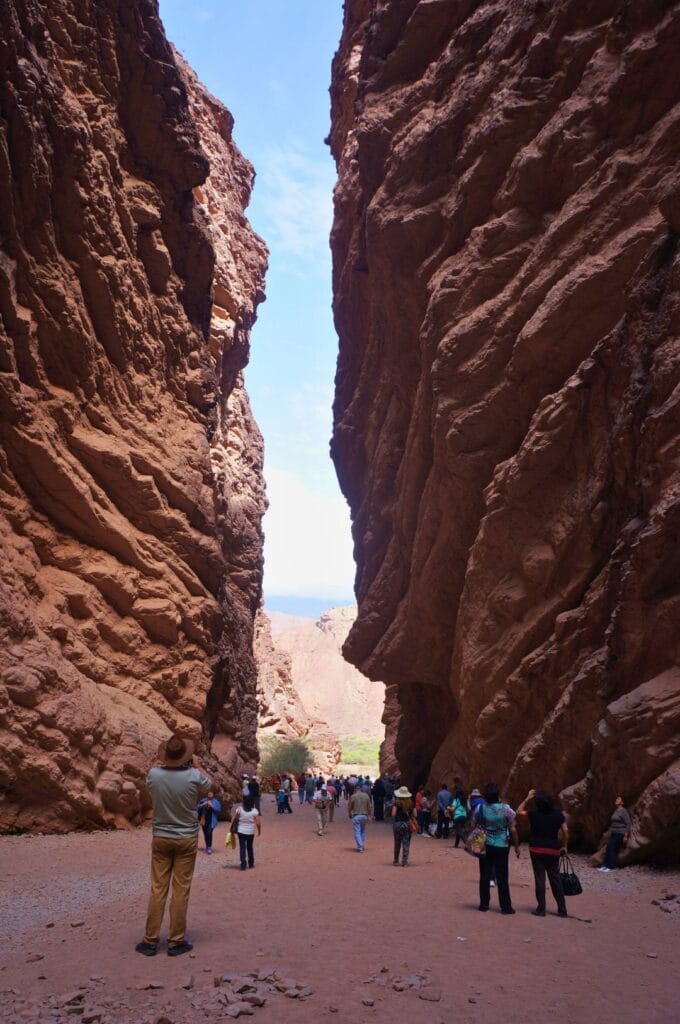
The day’s program: exploring different geological zones! We drove to the Garganta del Diablo (Devil’s Gorge), located 48 km from Cafayate, and then backtracked. We explored this magnificent canyon, stopping everywhere to take photos: the impressive El Anfiteatro, the Tres Cruces viewpoint, Los Estratos (La Yesera) with its colorful strata along a 1.2 km trail, the Los Castillos viewpoint with its unique rock formations…
In hindsight, we recommend doing it in the opposite direction, from south to north! Or if you prefer going from north to south (like us), start your tour earlier, around 8 a.m., to avoid the majority of organized tours arriving from Salta around 10 a.m…
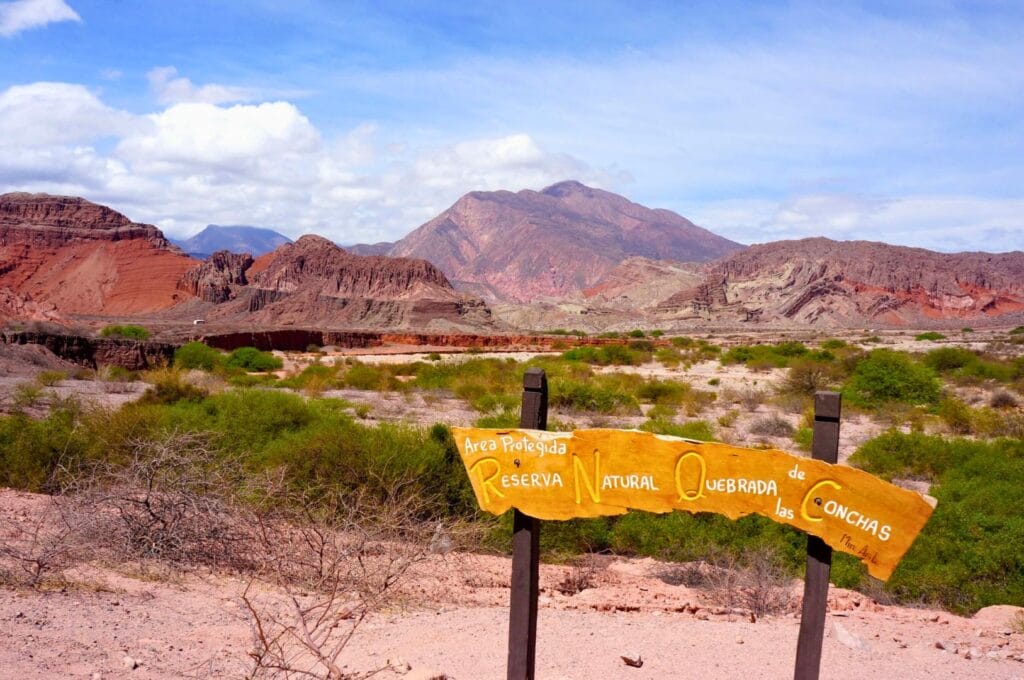
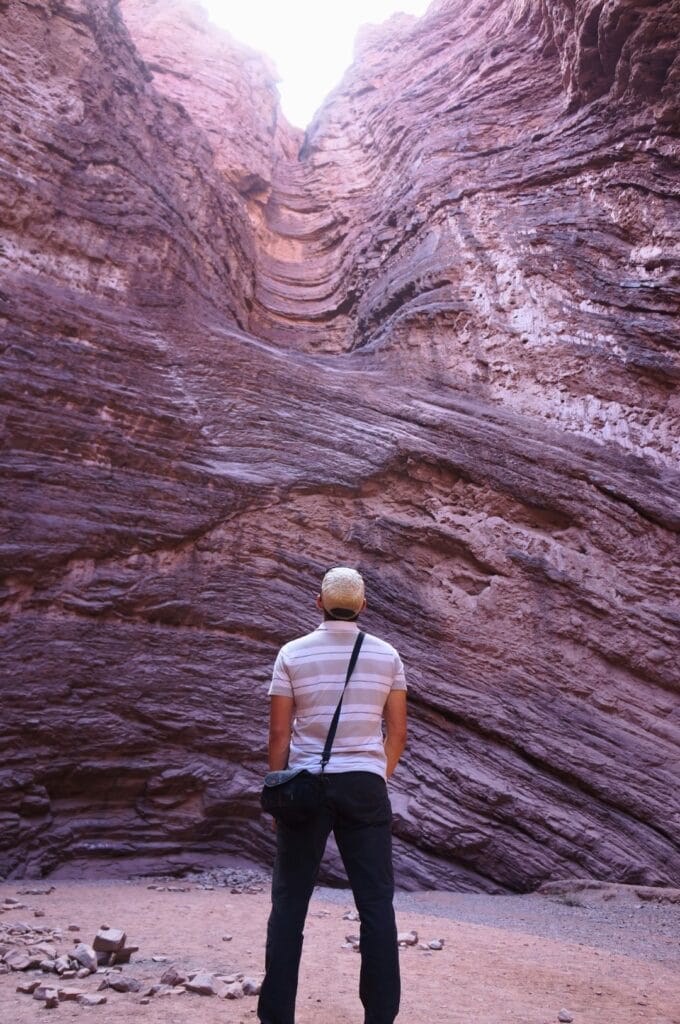
If you don’t have a vehicle, you can also rent a bike in Cafayate and take any bus heading to Salta. Ask to be dropped off at the Garganta del Diablo, and from there, it’s easy to cycle the 48 km back to Cafayate on a well-paved road. Be careful, though—the sun is intense in this area! Make sure to bring proper sun protection and plenty of water.
Another way to get there is by hitchhiking! With so many tourists in the area, you’ll have a good chance of catching a ride to the next photo spot—just flash your best smile! 😉
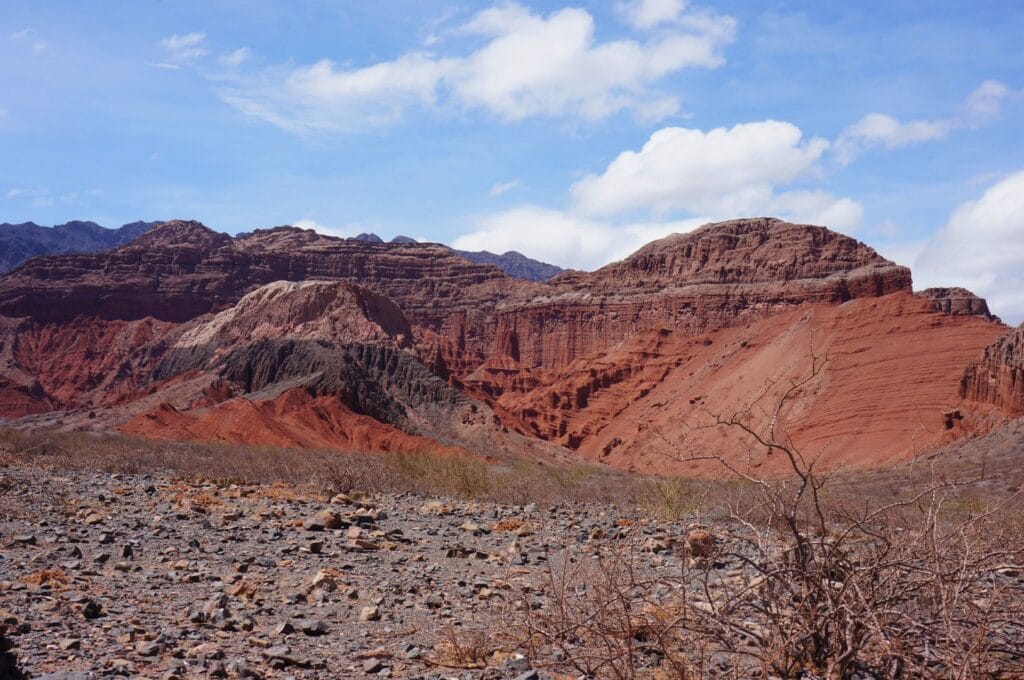
Bodega tour in Cafayate
Once the car was safely parked in front of our hostel, we set out on foot to discover the bodegas. In this area, these wine producers are true institutions.
Most bodegas in Cafayate can be visited like museums – with guided tours, explanations about wine production, and of course, wine tasting! This delightful end to the day helped us learn more about local grape varieties (Torrontés and Tannat) and refine our palate for Argentine nectars! We visited the Amalaya bodega, west of Cafayate, and can wholeheartedly recommend it! Among the dozen or so bodegas, we’re certain you’ll find your perfect match ;).
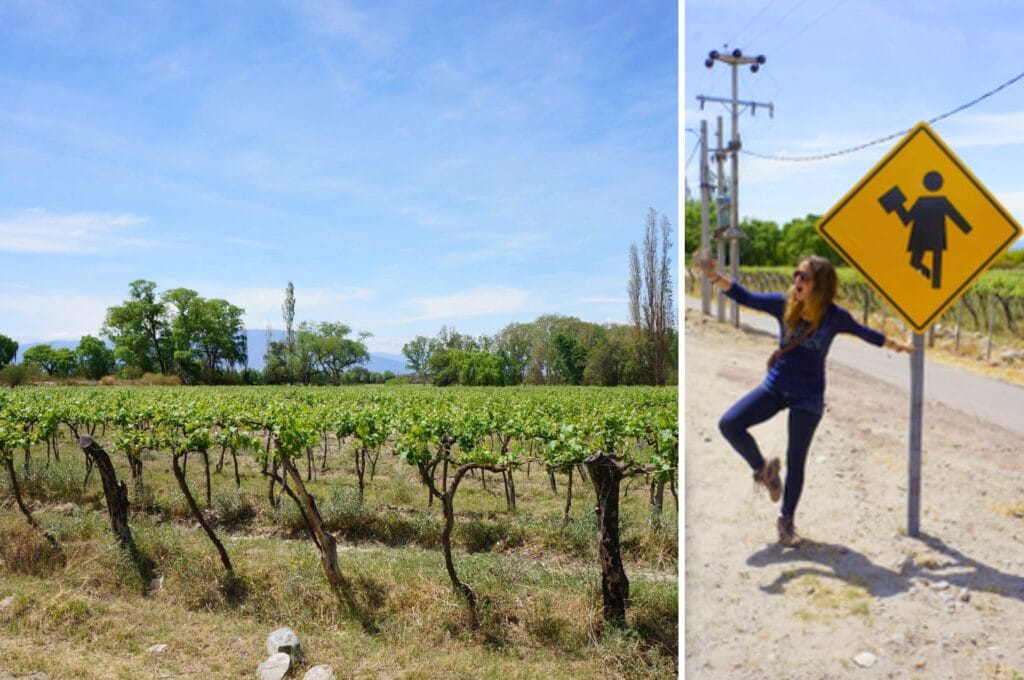
Afterward, we’re not sure if it was the Malbec talking, but we came across a few rather puzzling signs… Can you interpret them? A woman walking around with a hammer? Beware of the winemaker throwing bricks? We couldn’t quite figure it out!
Tip: Be careful when visiting bodegas – the alcohol tolerance while driving is zero in Argentina!
Cabras de Cafayate
We maybe should have stopped at Cabras de Cafayate before the bodega tour… A bit of cheese before wine would have been perfect, right? This goat farm even offers both during a tasting after an optional guided tour. In short, it’s the perfect way to end a road trip day, isn’t it? 😉
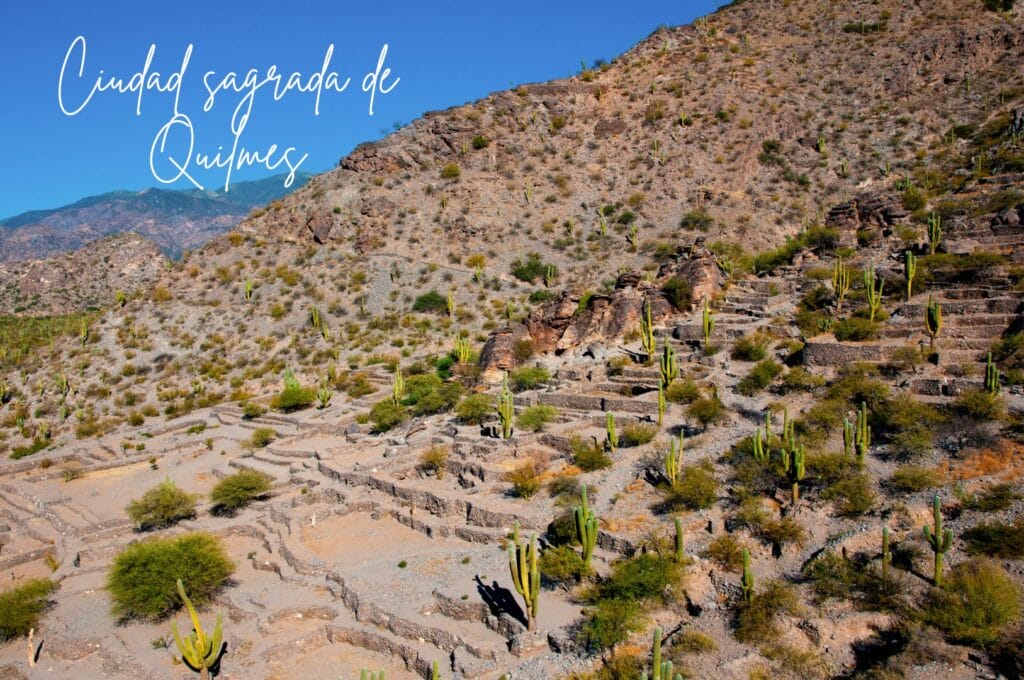
Quilmes
We’ll admit we didn’t visit the Quilmes ruins, located 1 hour from Cafayate. However, we probably should have stopped by to learn more about the Quilmes Indians, one of the indigenous peoples of northwestern Argentina. The archaeological site has a museum that traces the history and daily life of this pre-Hispanic ethnic group, and behind it stretches the ruins of the sacred city. Entrance costs 3500 pesos per person, and the site is open from 9 a.m. to 6 p.m. Allow about 1.5 hours to tour the site.
That’s everything about the southern loop in Salta province, the first part of our road trip around Salta. But it’s not over yet! In Cafayate, we say goodbye to Baptiste, who continues his journey towards Buenos Aires. As for us, we keep the car for 4 more days to head to Jujuy province and do the northern Salta loop, famous for its multicolored mountains and landscapes! Even the aerial view is impressive, right?
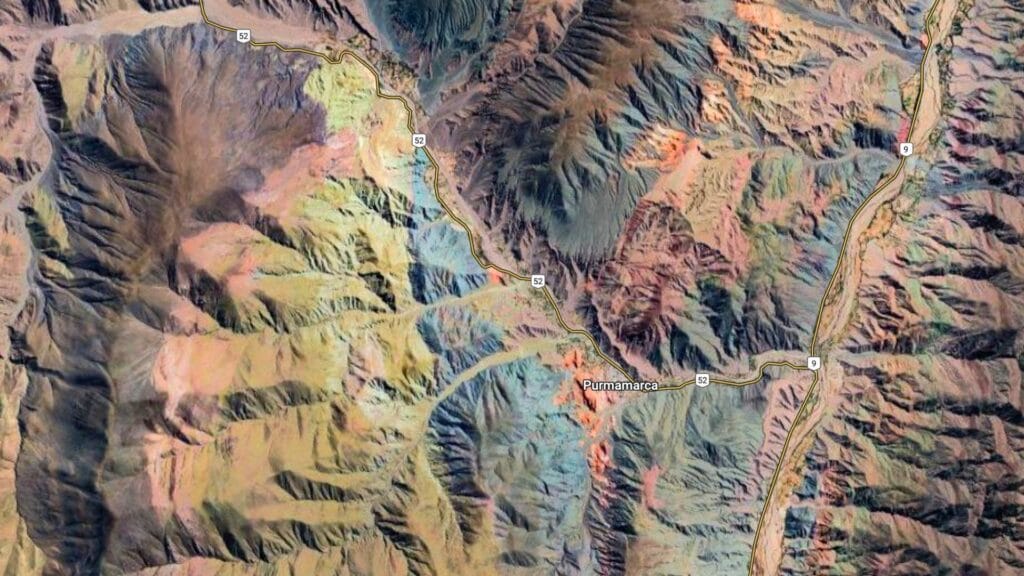
Day 4 of the road trip: from Cafayate to Purmamarca
Route between Cafayate and Purmamarca via Salta
After an early wake-up in Cafayate (we planned to drive 350 km to Purmamarca), we drove up Route 68 through the magnificent Quebrada de las Conchas to Salta. Even though we had already visited this part with my cousin, we’re not the type to be blasé. This section is just grandiose, and we were amazed a second time by the spectacle. Plus, the winding road is in perfect condition – a real pleasure to drive here! It reminds us a bit of our Swiss mountain roads :).
Once in Salta, we took Route 9 towards San Salvador de Jujuy in Jujuy province. Note: you can also take routes 34 and 66 for a much longer but not very interesting trip. The road condition is fine, but to be honest, we’ve never driven on such a twisty road! It’s like the workers deliberately added curves in completely unnecessary places. But since Fabienne loves driving, she indulges her inner Colin McRae (or Sébastien Loeb, if you prefer ;)).
From San Salvador de Jujuy to Purmamarca, nothing special to report. Route 9 widens again, and the trip takes just 1 hour!
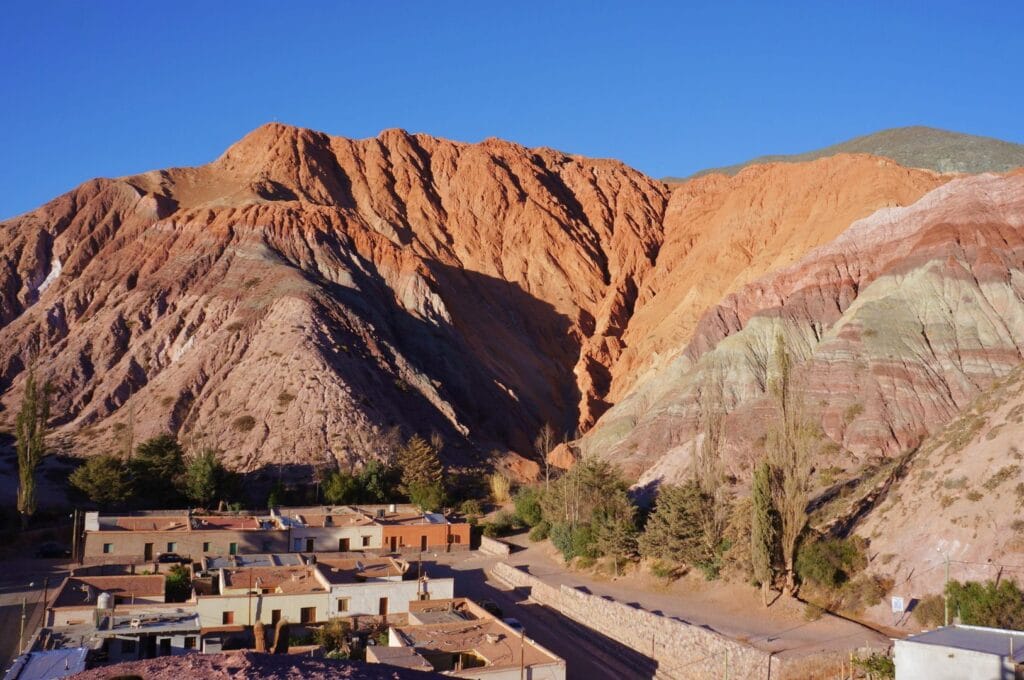
Purmamarca, the starting point for colorful mountains
So, why do we stop in Purmamarca? Actually, the village is located at the foot of Cerro de Los Siete Colores, the Seven Colors Hill, which is definitely worth the detour. The village is also known for its handicrafts, but if you want our opinion, they’re the same trinkets you find in all tourist spots, with the difference that “Purmamarca” is written on them ;).
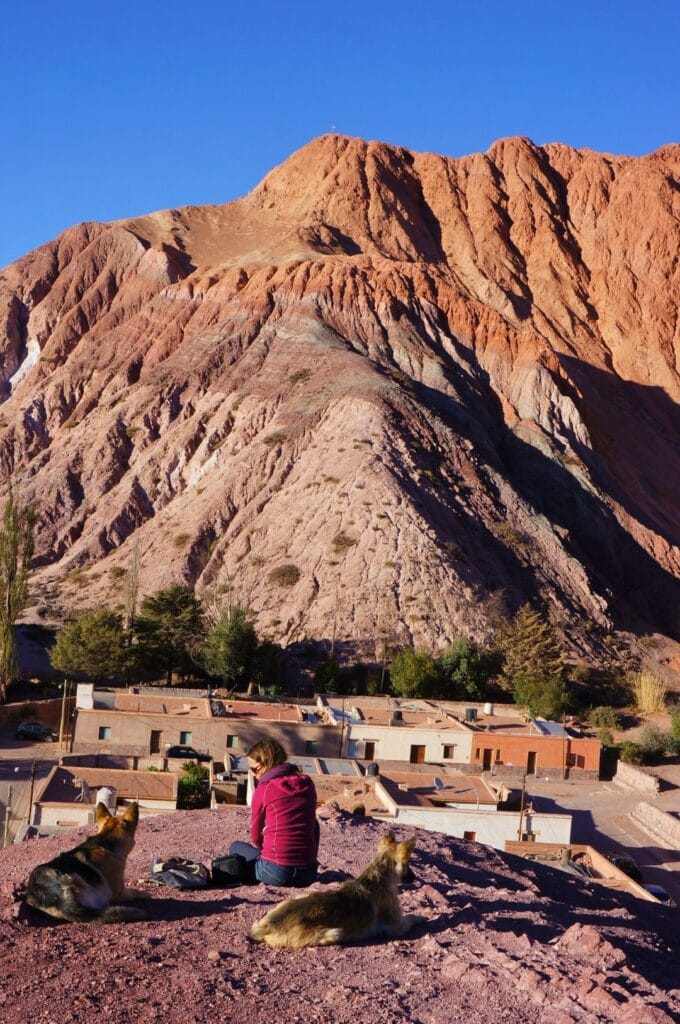
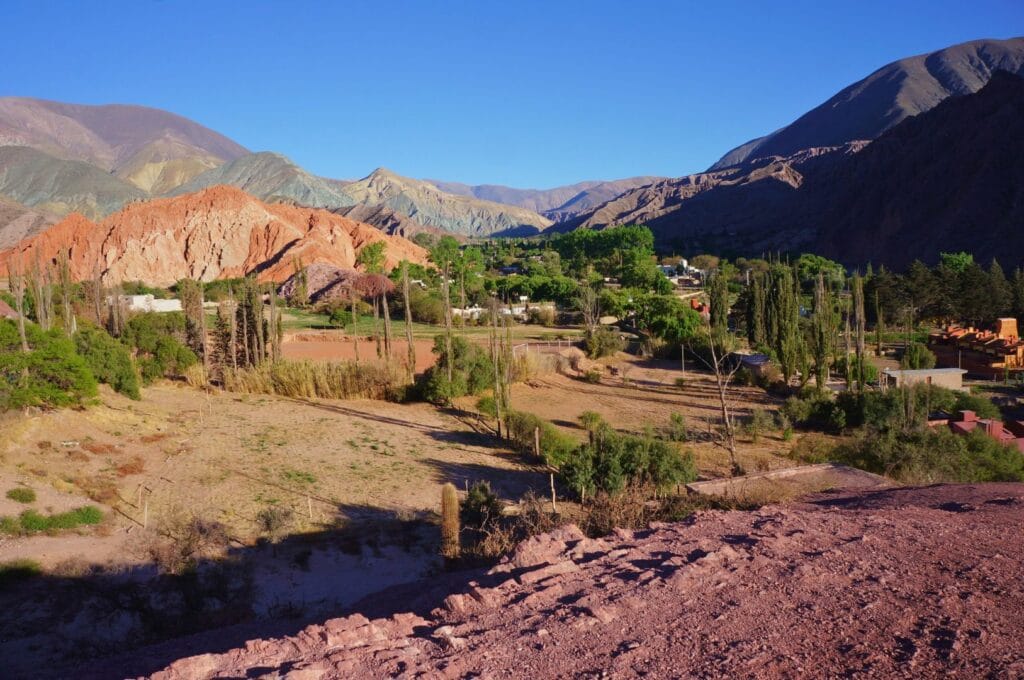
We’ll show you the map of a nice little one-hour hike around the multicolored hill. Yes, it’s all there is to do, but the view is worth a look! The site is paid (to maintain the area), but in our opinion, 750 pesos is well invested ;). We only did it at sunset, but it must be just as nice at sunrise!
- Distance between Cafayate and Purmamarca: 350 km. Allow 7-8 hours of driving with a few stops. The road is in good condition but winding in some places!
- Sleeping in Purmamarca: During this road trip, Purmamarca was the only place we looked for camping, to enjoy the environment. However, the price at the time was the same as a room in a hostel! We preferred a cozy bed. Wild camping should be possible without too much trouble between villages, as there’s not much around, and not many people who could see you. Otherwise, Luna Garcia camping looks okay (6000 pesos per person). Among the good establishments in the village, we recommend La Valentina for its delicious breakfast and superb view of the Seven Colors Mountain from its terrace, as well as Giramundo Hostel Purmamarca, perfect for a night in a no-frills dormitory. Don’t be surprised by the prices compared to Cafayate or Tilcara. Purmamarca is touristy, so night prices are high… To save money, prefer lodging in Maimará or Tilcara.
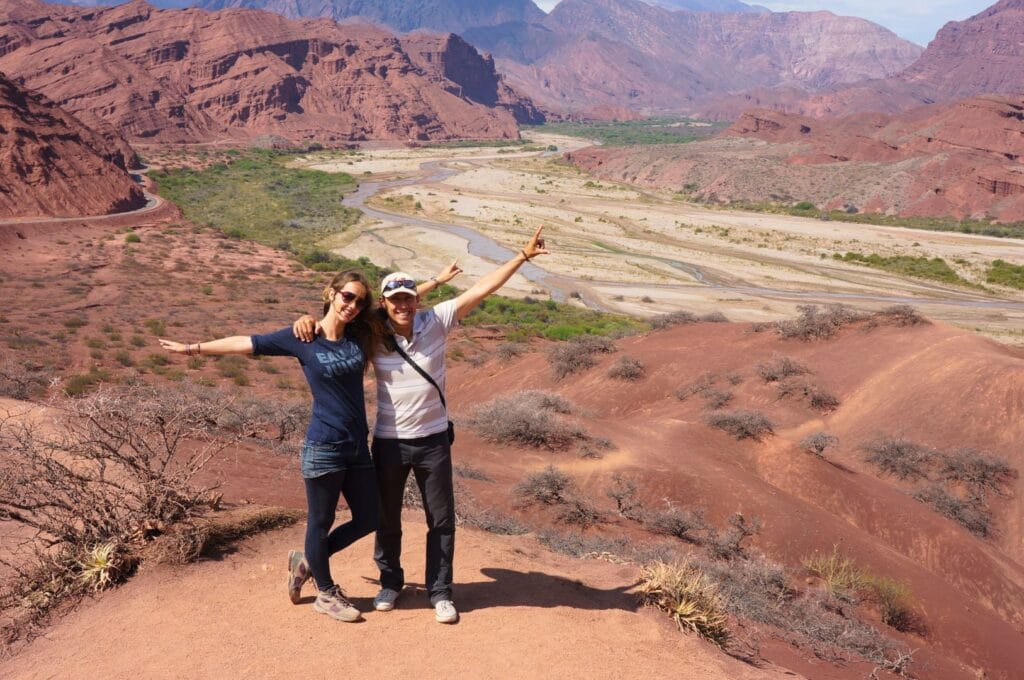
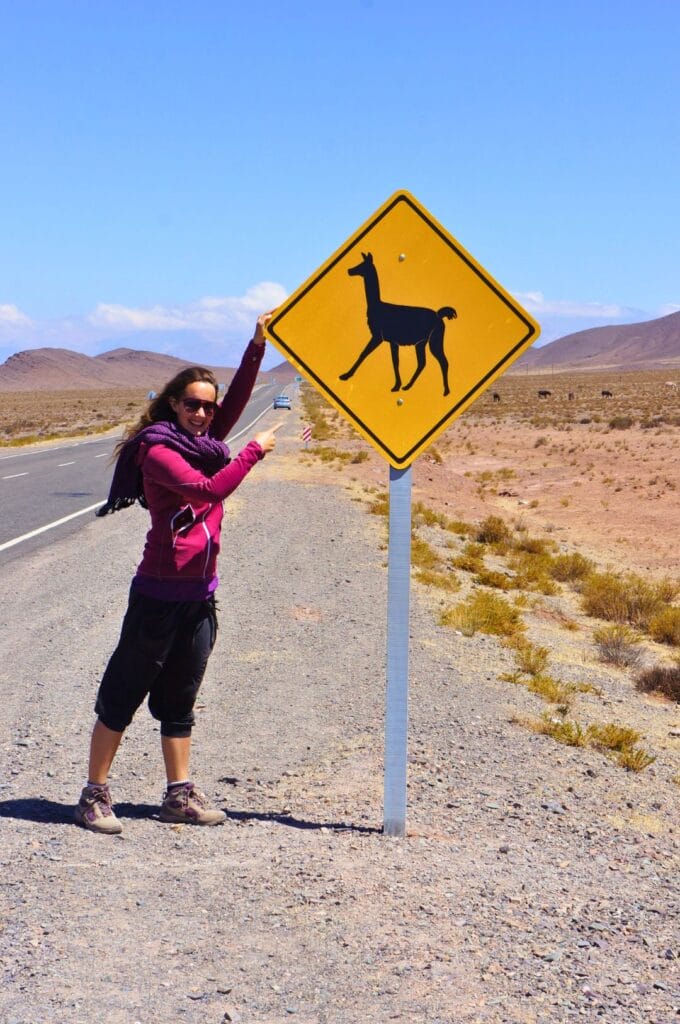
Day 5 of the road trip: Humahuaca and Tilcara
La Quebrada de Humahuaca
The next day, we decide to stay based in Purmamarca to explore the Quebrada de Humahuaca, a gorge that is actually a UNESCO World Heritage site! For this, we drive up Route 9 to the village of Humahuaca. Frankly, the landscapes along the road are spectacular! The mountain colors transition from ochre to yellow, passing through violet. It’s a pure feast for the eyes!
Once in the charming village of Humahuaca, since we hadn’t planned much, we stop to drink a coffee on a terrace. There, the server tells us about the mirador Hornocal, also called the 14 Colors Hill viewpoint. According to him, it’s the absolute must-see in the region! He gives us some vague explanations about how to reach it. We’ll provide better instructions below ;). Before leaving, he warns us that it’s a good hour of unpaved road from the village.
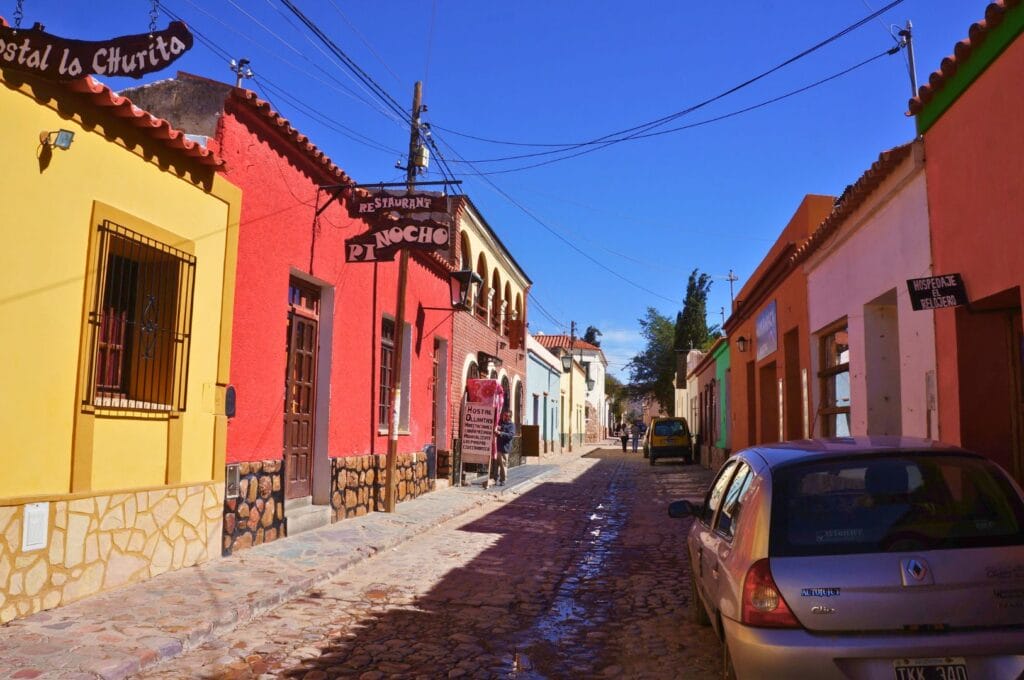
Route 73 or how to test your car’s limits
Well, unpaved roads don’t scare us much. So we set off on the adventure with our Chevrolet Corsa. After half an hour, we realize we don’t have much gas left and the information from our friend isn’t very clear. But we go with our gut feeling and we’re not quite out of gas yet. No worries!
Obviously, as you’ll have guessed, we took a wrong turn at a fork! But luck is always with us, and we cross paths on an increasingly degraded dirt road with the only pickup truck that will pass through here all day. We stop to ask for information. Result? We went in the wrong direction a quarter-hour earlier. He tells us we were lucky to meet him because we would have gotten lost if we had continued like that. Oops ;)!
Serrania de Hornocal or Rainbow Mountain
Now that we know where we need to go, we wonder if we’ll have enough gas. After some clever calculations, we figure we should make it to the mirador Hornocal and back to the village. So we set off (or rather, set off on the dirt track) and following our pickup friend’s instructions, we arrive about 40 minutes later.
And then, my friends, BAM! Visual shock! I’ll let you judge for yourself. It looks like the mountain was painted by an artist! It was definitely worth the trip ;). We take the opportunity to enjoy a privileged picnic break, at 4,300 m altitude, all alone with this 14-color mountain… Tough life!
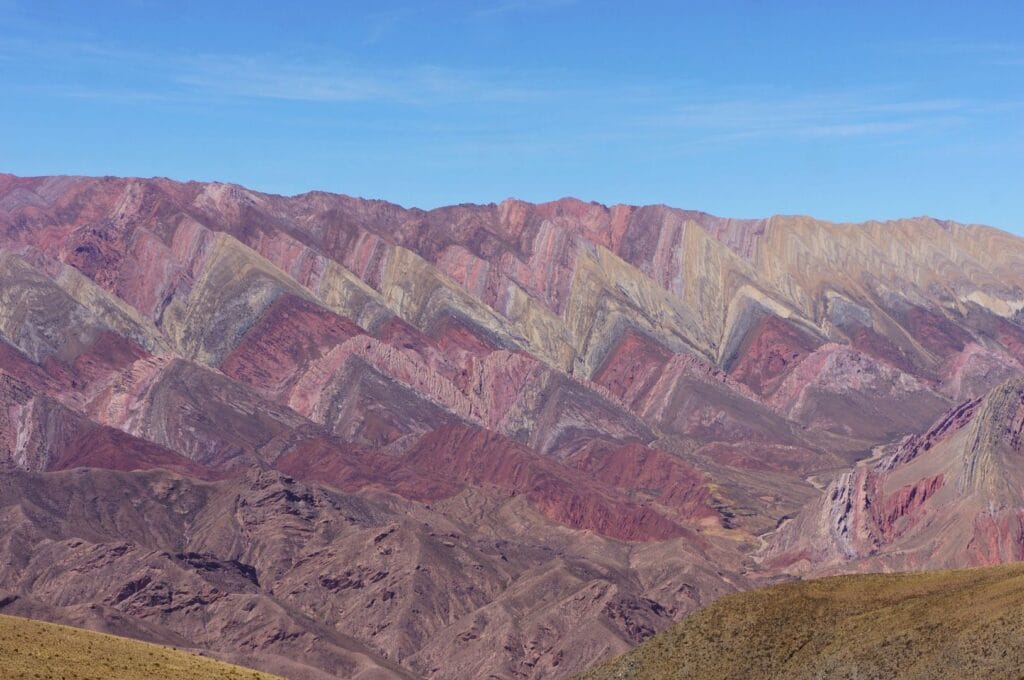
Once back in the village of Humahuaca and after refueling (we made it back with the tank practically on reserve), we headed toward Purmamarca and then on to Tilcara.
You’ll likely see Humahuaca residents offering 4×4 taxi services to the Rainbow Mountain. You can get there without a problem with a rental car, even a sedan! To go to the Hornocal viewpoint, cross the only bridge in Humahuaca and immediately turn left to take the dirt track (route 73) leaving the village. Continue 20 km on this track without turning anywhere. After about half an hour, the road will start to climb. Go to the pass, then turn right at the top, there’s a Hornocal sign. Honestly, don’t be afraid to go, it’s not complicated, just a bit long (1 hour). We just had bad information ;). Locals have established a toll of 1000 pesos per car.
Tilcara, Garganta del Diablo and Maimará
On the way, we stop to pick up a French hitchhiking couple. Since we also planned to do a lot of hitchhiking in Argentina, we figure it’s good karma to take people when we have a rental car. It turns out they’re also world travelers and bloggers! We hit it off well, and since they’re also staying in Purmamarca, we decide to spend the rest of the afternoon together.
In addition to numerous photo stops along the road, we stop in Tilcara for the magnificent view and to check out the Garganta del Diablo (another devil’s gorge, oooh). Our friends Jess and Gog had heard it was nice and you could swim under a waterfall. Well, honestly, the four of us had a good laugh, but the waterfall is tiny and the gorges aren’t very impressive. In the end, it’s a pleasant walk, but if you’re a bit pressed for time, you can skip it.
However, we recommend stopping in Maimará, just before Purmamarca. The mirador del Monolito Maimará is definitely worth it, see for yourself!
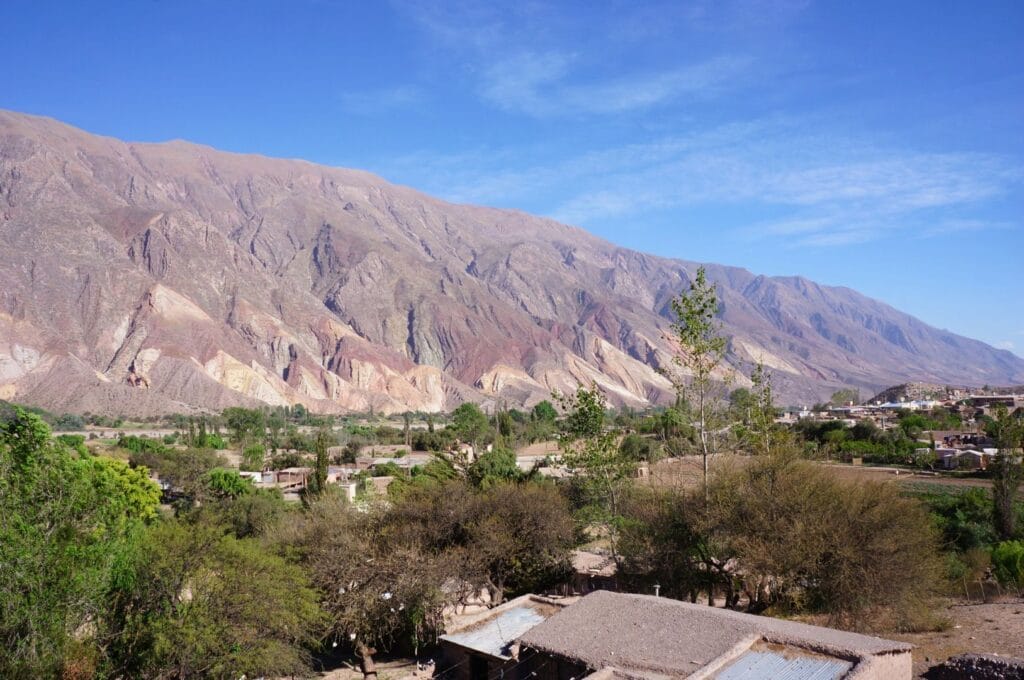
If you arrive in Tilcara by hitchhiking or without your own car, you’ll need to walk 2 hours from the village to reach the gorge entrance. By car, it takes 25 minutes from the center to the Garganta parking lot.
If we were to do it again, we’d do something different instead of Tilcara. Either we’d go to Tres Cruces, 50 minutes north of Humahuaca – a waterfall that’s supposedly perpetually frozen. Up high, a short walk to the Gigantes Dormidos, unique hills with colorful strata, and a hike to the Puente del Diablo viewpoint, which requires good endurance, would make a great last stop before turning back. Or we’d explore Uquía, a village just before Humahuaca, as the starting point for a 3-hour hike into Quebrada las Señoritas for immersion in a desert landscape worthy of American west canyons! The downside: the entrance is paid (1500 pesos per person), and guide services are mandatory (4000 or 8000 pesos per adult, depending on the chosen path).
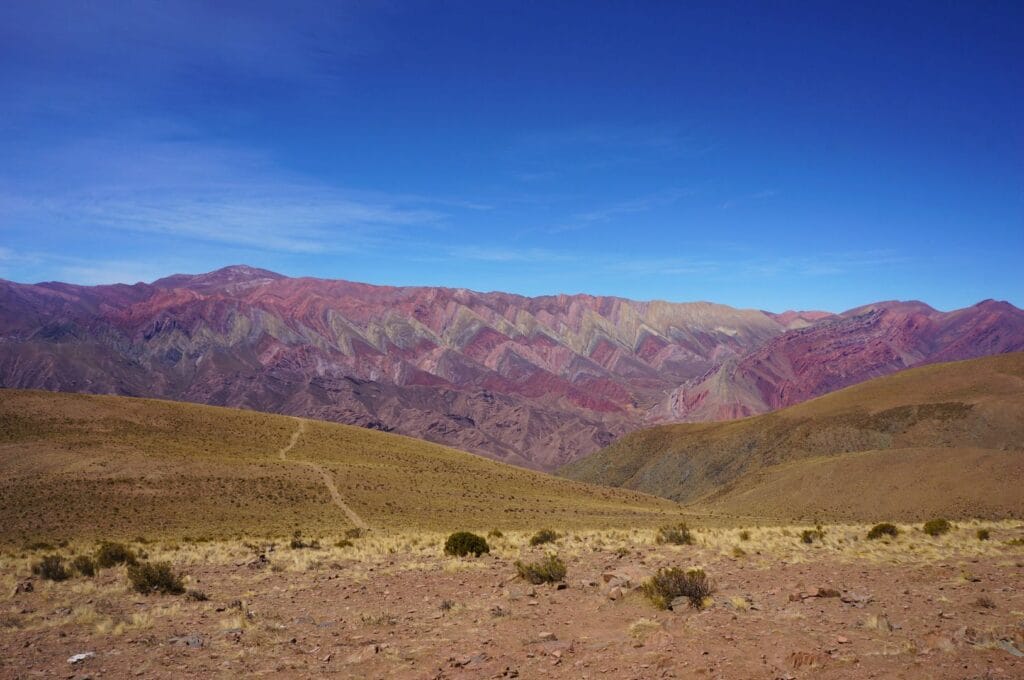
Day 6 of the road trip: from Purmamarca to San Antonio de los Cobres
After making plans to meet our two new friends in Salta a few days later for a bottle of red, Fabienne and I set off toward the Salinas Grandes, a salt flat west of Purmamarca. Our goal is to reach the village of San Antonio de los Cobres via the famous Ruta 40, Argentina’s national road that spans from north to south. We’d already driven a portion of it on the southern loop between Cachi and Cafayate. In terms of distance, it’s about 150–200 km, but we already knew Ruta 40 on this stretch was an unpaved track, and we weren’t sure about its condition.
More French hitchhikers
Barely out of Purmamarca, we come across two French hitchhikers again. Naturally, we give them a ride! With all this good karma, we’re hoping for some luck ourselves the next time we hitchhike. They are heading to San Pedro de Atacama via Route 52—the same road we’d taken in the opposite direction a few days earlier by bus.
We first climb to a pass over 4,000 meters high, with breathtaking views of the Cuesta de Lipán. Then, out of nowhere, we find ourselves stuck in a line of cars in the middle of nowhere. What is going on? A protest, of course! Locals from a nearby village are blocking traffic to demand better access to their village and electricity. Surprisingly, everyone remain calm (while it would’ve caused an uproar back home) and wait for the police to arrive and sort things out. We ended up waiting for about two hours, but the cheerful atmosphere made the time fly by!
Salinas Grandes and the former Ruta 40
We continue toward the Salinas Grandes, a “small” salt flat reminiscent of Bolivia’s Uyuni Salt Flats. It’s at these salt flats that Route 52 (the paved road we are on) intersects with the old Ruta 40 (now known as Route 79). At the time of our visit, it is still labeled Ruta 40. So, we drop off our hitchhiking friends at the junction and take the famous former Ruta 40 (or 79). The track turns out to be in rather poor condition, and we quickly begin to question whether we make the right choice.
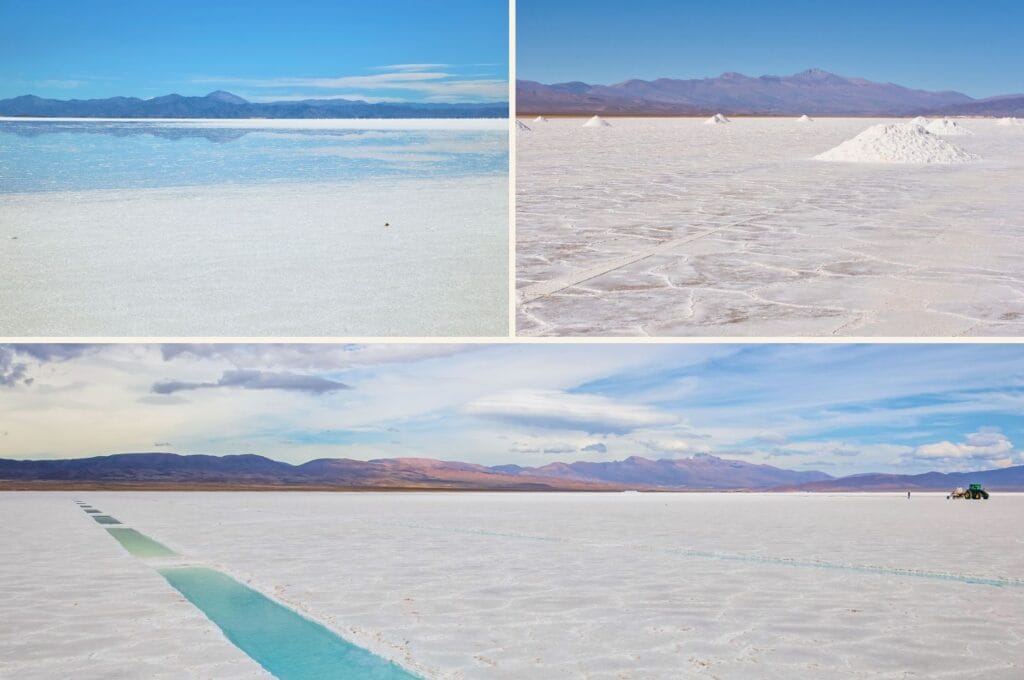
A quick check on Maps confirms we are on the correct road. However, we realize that the official Ruta 40 is about 80 km further along Route 52. Unsure of what you would do in our shoes, we decide to turn back, as the road conditions seem to worsen. We rejoin Route 52 to reach the official Ruta 40.
We didn’t spend much time at the Salinas Grandes since we’d already visited Atacama and Uyuni. To explore the area, you need a guide at either of the two entrances. Because the salt flats span the provinces of Salta and Jujuy, each province has its own entrance! On the Salta side, a car tour costs 14,000 pesos per vehicle, while on the Jujuy side, a walking tour costs 2,500 pesos per person.
We drove through the Salinas Grandes toward the village of Susques. From there, we had another 100 km of track (Ruta 40!) to San Antonio de los Cobres. This leg of the journey wasn’t a done deal yet, but we were optimistic as this route seemed in better condition than the one we’d taken earlier.
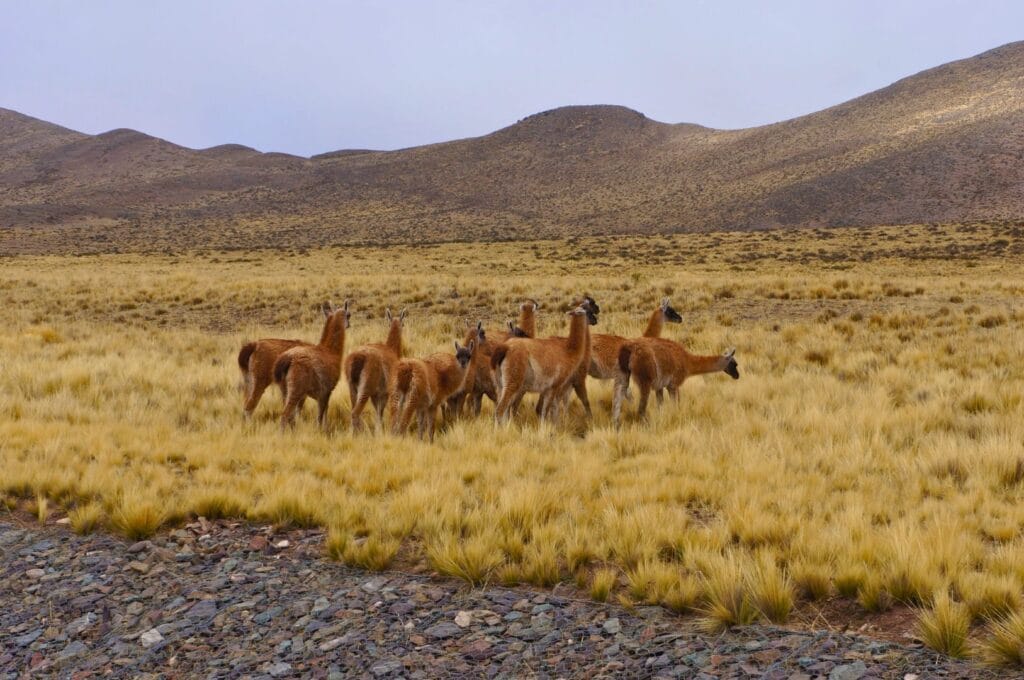
When a Corsa tries to be a 4WD
The first 70 km of track between Susques and San Antonio de los Cobres were stunning. We may sound like a broken record, but northern Argentina truly offers some of the most spectacular landscapes. Confidently, we think we’d arrive in San Antonio mid-afternoon. But that was before the road deteriorated significantly. The track got so rough we wondered multiple times if we should turn back.
Our little Chevrolet Corsa wasn’t exactly built for this kind of terrain. The potholes get so big that we scrape the underside of the car once or twice! At one point, we even got stuck in the sand! Picture this: me outside pushing while Fabienne revved the engine—all in the middle of nowhere!
La Polvorilla viaduct
Our last stop of this never-ending day is the La Polvorilla viaduct, the area’s star attraction. This iconic viaduct is a key stop for the famous Train to the Clouds, which crosses it daily around 1 p.m. Standing 63 meters tall and 224 meters long, the viaduct feels like a journey back to the early 20th century.
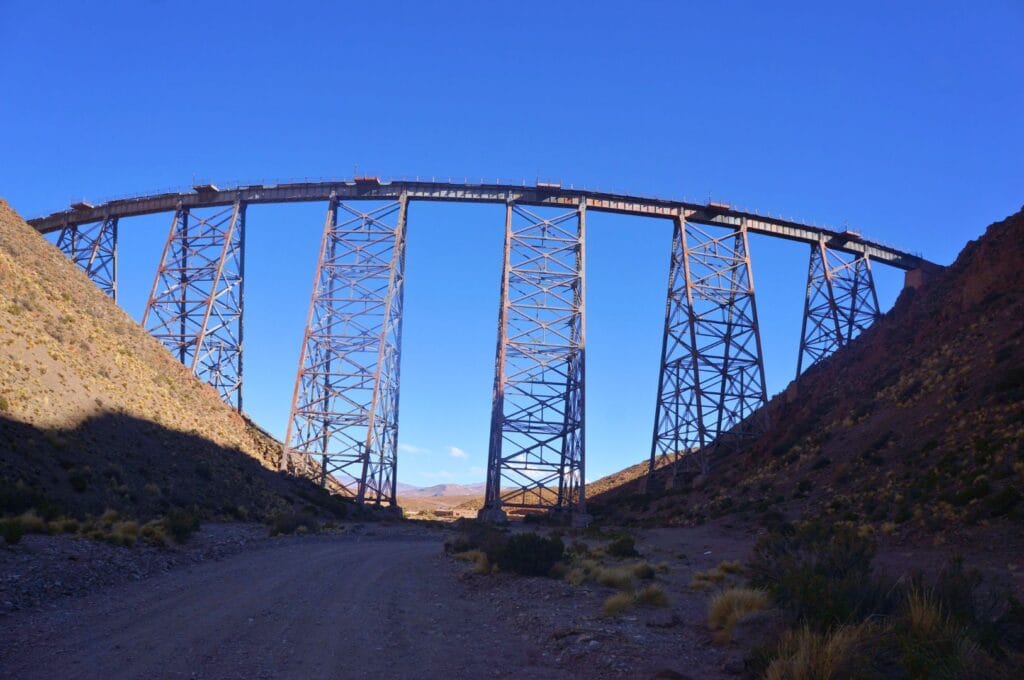
It takes us two full hours to cover the last 30 km of this rough road. We finally arrive in San Antonio de los Cobres at sunset, completely exhausted but with unforgettable landscapes etched into our memory.
- Distance between Purmamarca and San Antonio de los Cobres: About 160 km (3 hours) via Route 79 or 260 km (5 hours) via Route 52 and Ruta 40. Choose wisely! The only thing that might make taking route 40 worthwhile is the La Polvorilla viaduct, where the famous Train to the Clouds passes by.
- Sleeping in San Antonio de Los Cobres: We find a fantastic hotel right in the center called Hospedaje Amanecer Andino. A double room costs around 20,000 pesos, including breakfast. The room is lovely with a private bathroom, a TV/DVD player with movies, and heating—pure luxury! To see other accommodations in San Antonio de Los Cobres, click here!
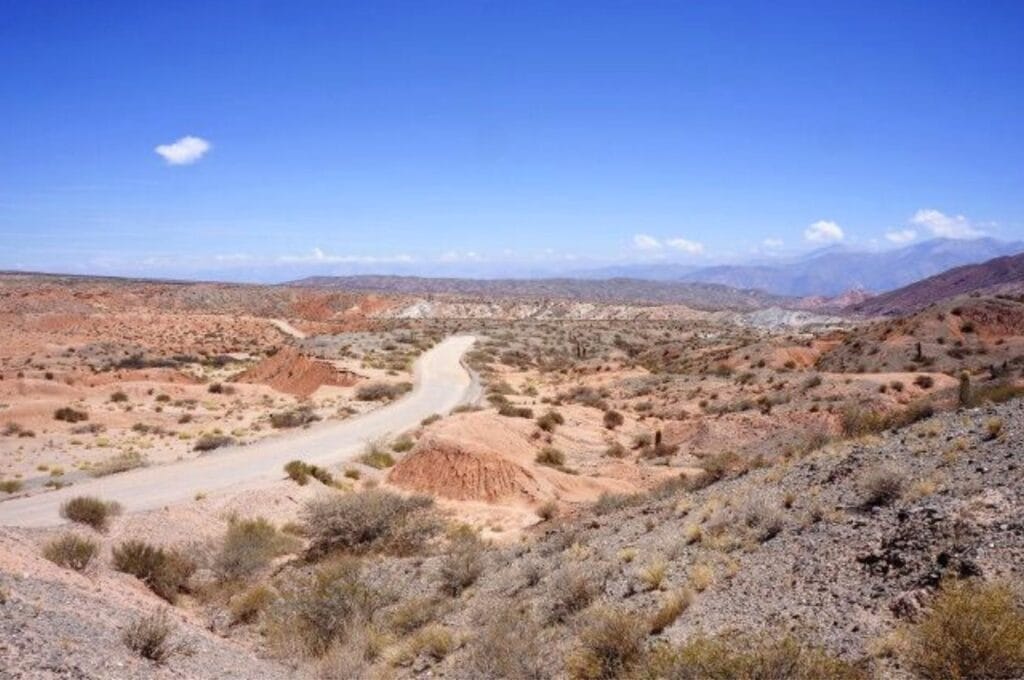
Day 7 of the road trip: from San Antonio de los Cobres to Salta
Tastil ruins and Quebrada del Toro
Let’s be honest: we rushed through this final day a bit because we were getting tired of driving on rough roads. We were mostly looking forward to returning the car, hoping we hadn’t broken anything the day before! Still, we made a few stops along the way to take some photos.
The Tastil ruins are the remains of the largest pre-Hispanic city in the country, once home to nearly 3,000 people. While not as impressive as the Quilmes ruins, they are still listed as a UNESCO World Heritage Site! A small, free museum displays artifacts found in the area, dating back to the Tastil era. After the visit, we wandered through the ruins, which are filled with countless cacti.
The Quebrada del Toro offers stunning views, though we drove through it more quickly than we would have liked!
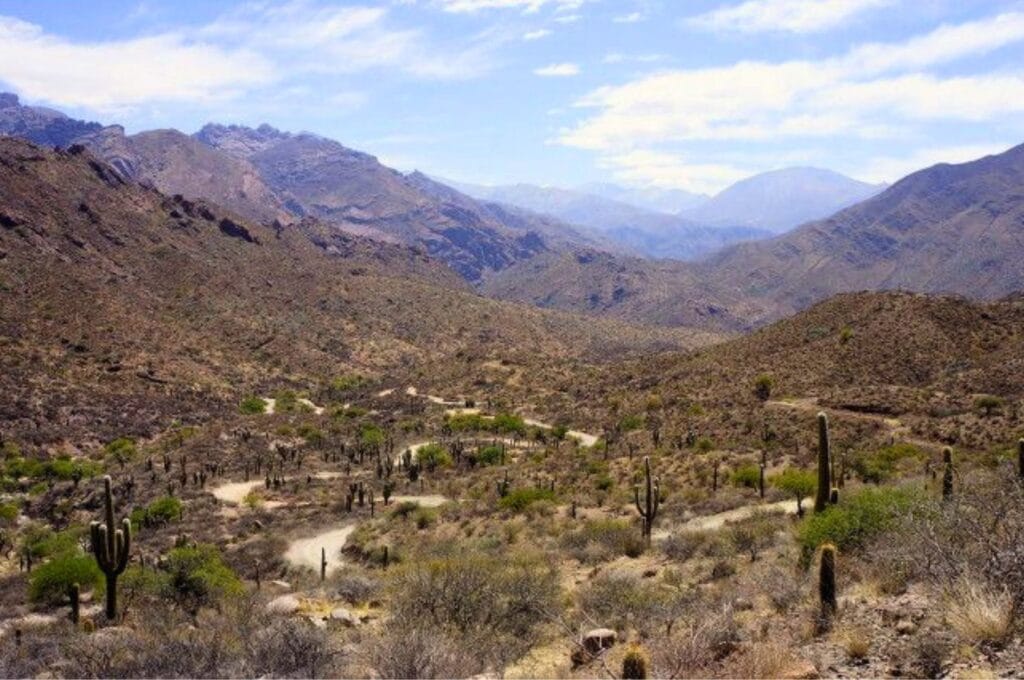
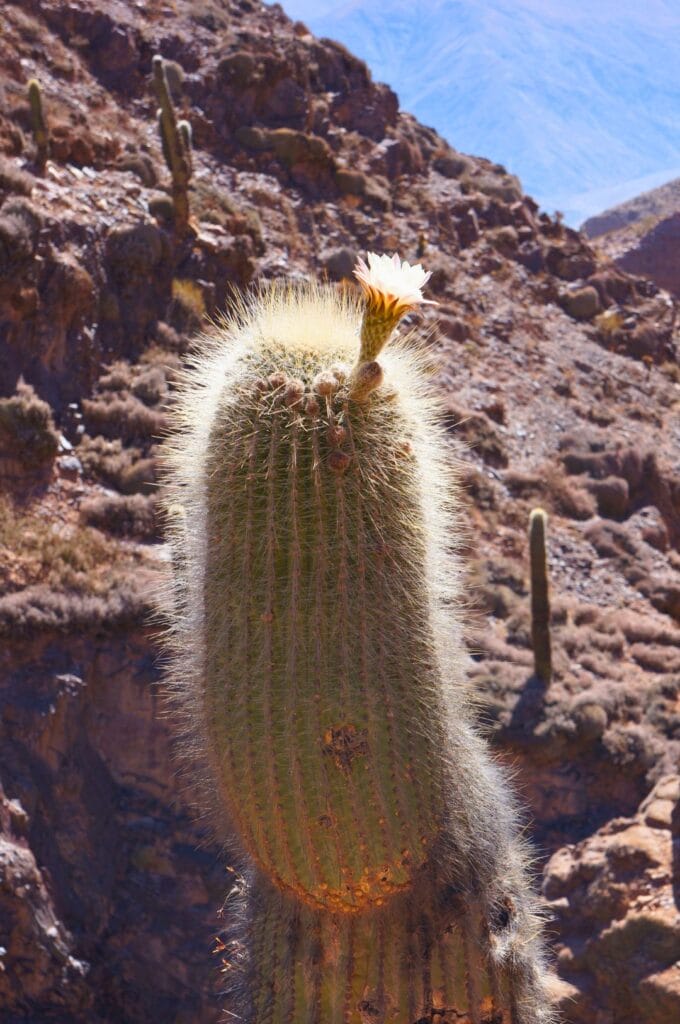
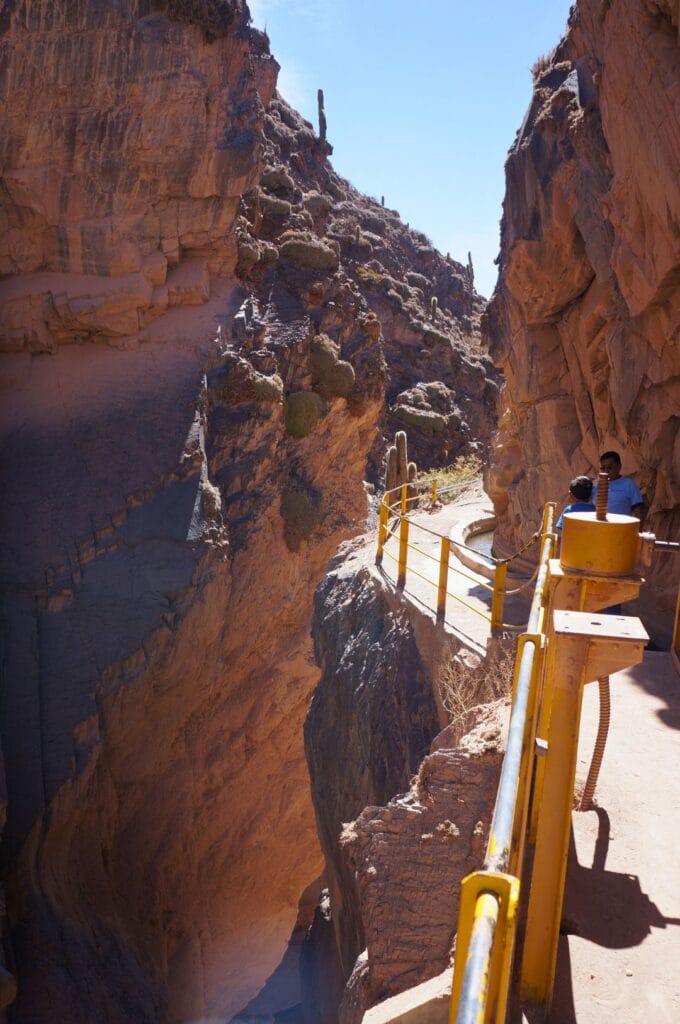
Return to Salta
By early afternoon, after 2 hours and 40 minutes of driving along the scenic Route 51, we were already enjoying an ice cream in Salta’s main square. We had to celebrate the fact that the car made it back in one piece! 😉 If you haven’t visited Salta yet, this is your chance before heading off on new Argentine adventures.
- Distance between San Antonio de Los Cobres and Salta: To return to Salta, it’s 170 km, which takes about 2 hours and 40 minutes along Route 51.
- Sleeping in Salta: We stayed again at our favorite, Ferienhaus Hostel Salta. For other options, check out the “Where to stay in Salta” section.

And that’s a wrap for this 7-day road trip in northern Argentina! As you can tell, we don’t regret for a second our last-minute itinerary changes. So far, it’s been nothing but incredible: breathtaking landscapes, amazing wine, and probably the best value for money on the planet. Honestly, we’re not getting tired of Argentina anytime soon. In fact, we love this region so much that we decided to rent an apartment in Mendoza for a few weeks to settle down and get some work done. Feel free to leave a comment if you have any questions or thoughts!
Pin it
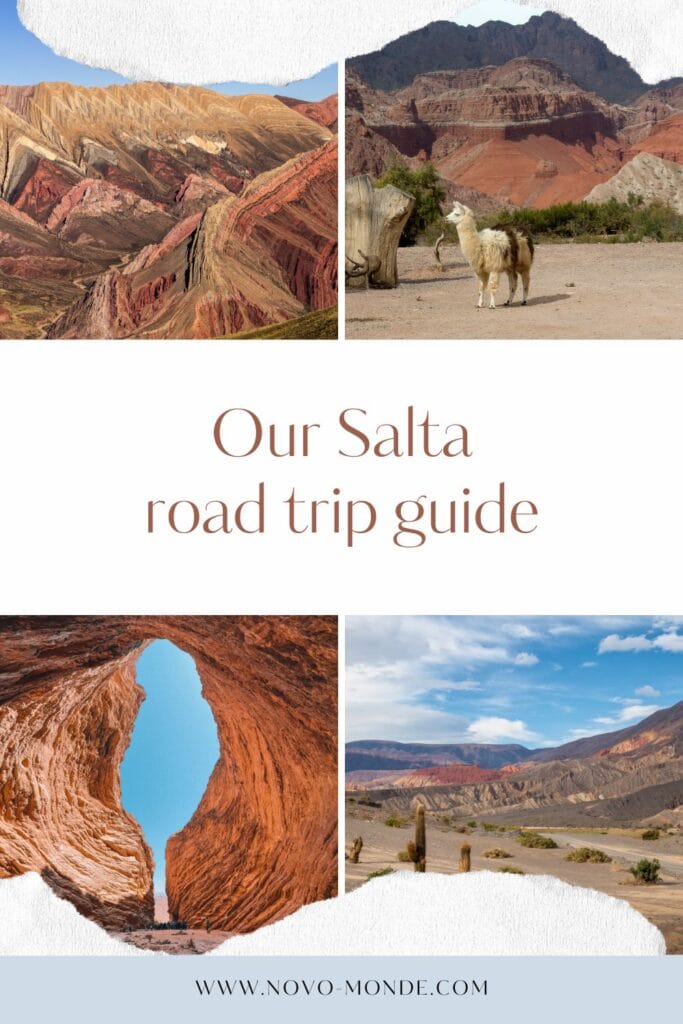
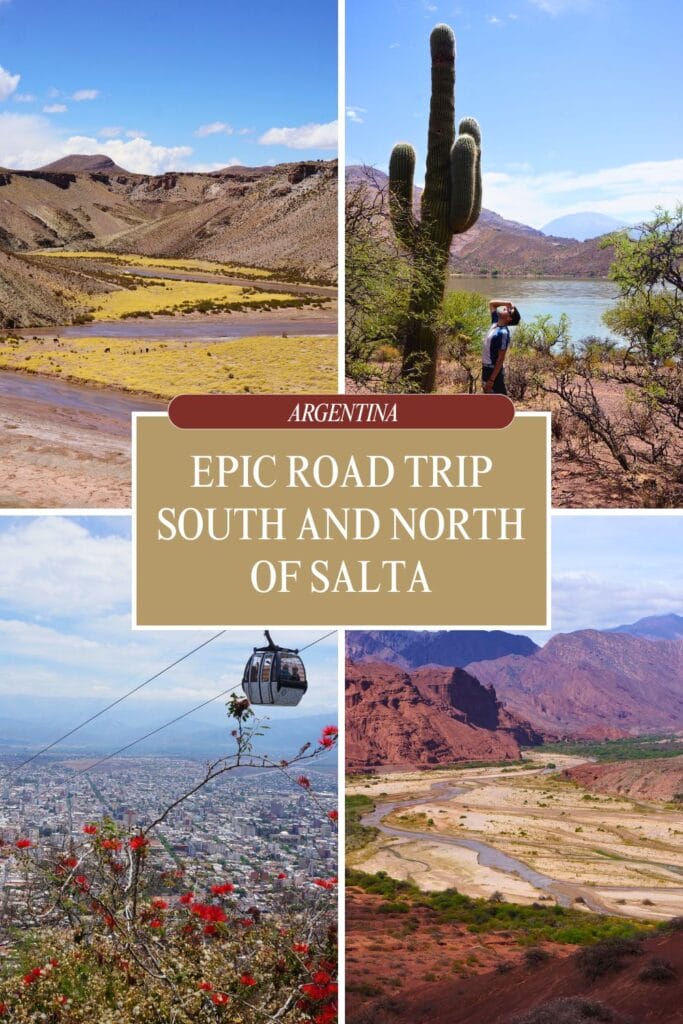
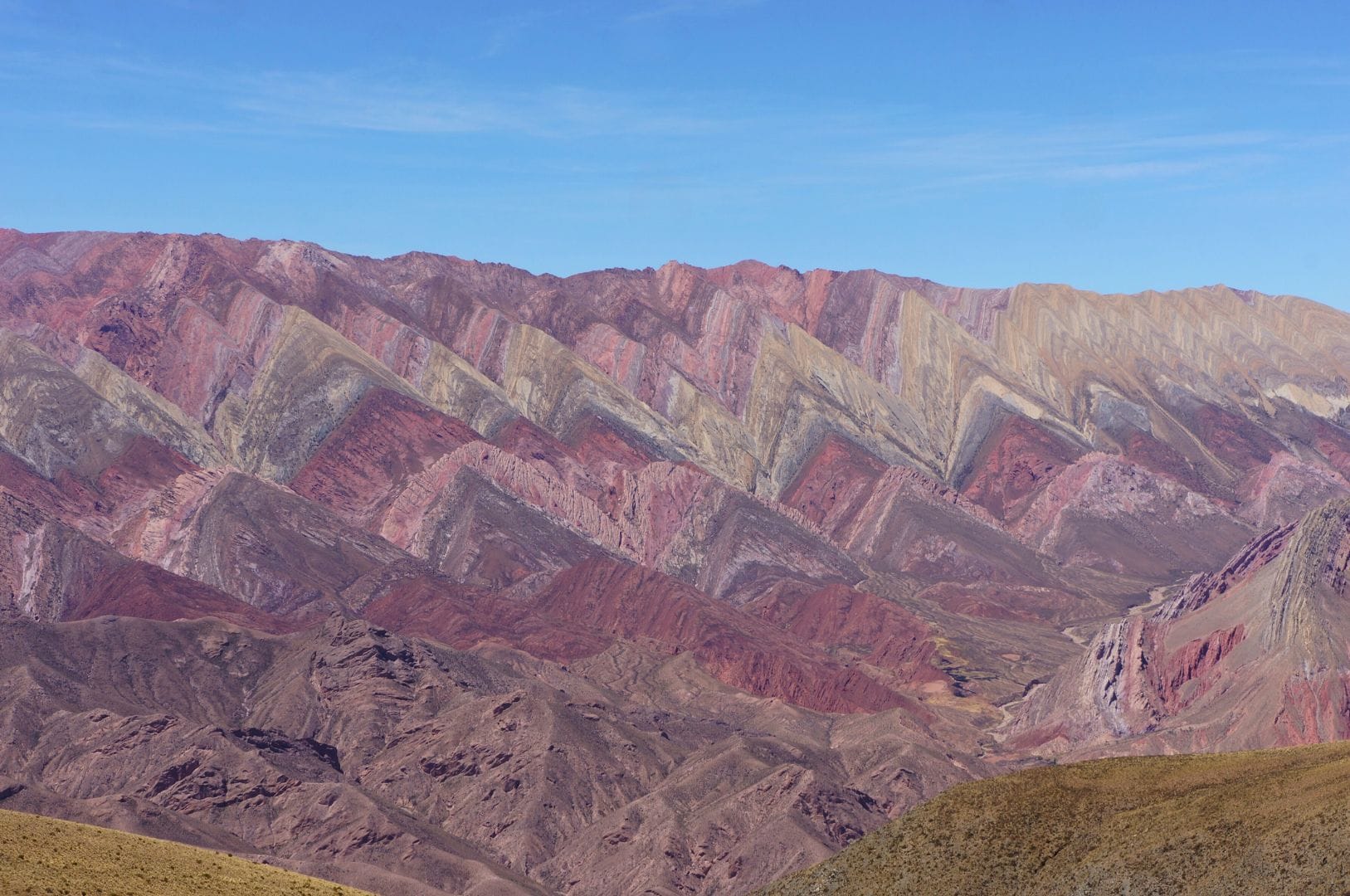
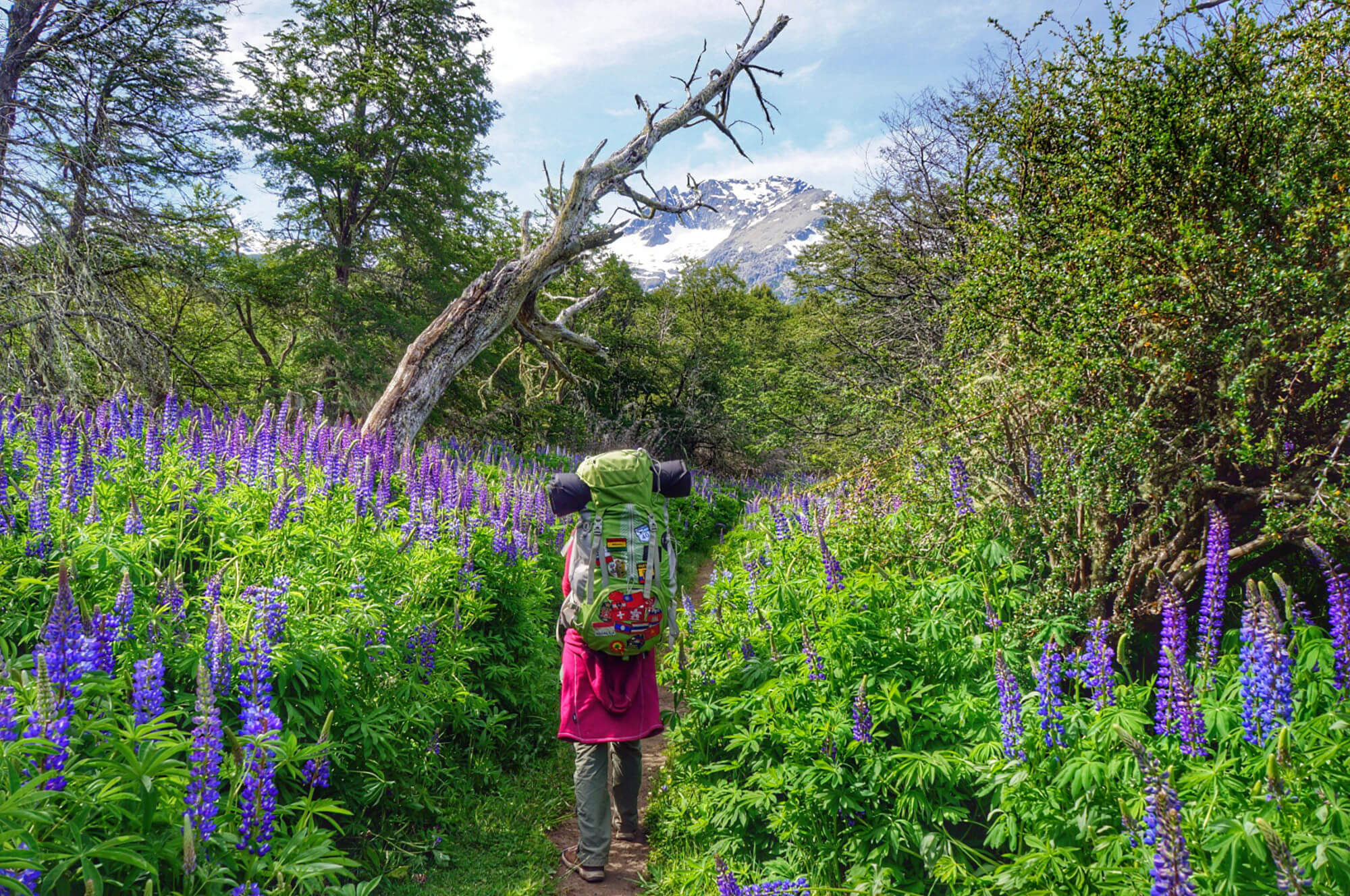
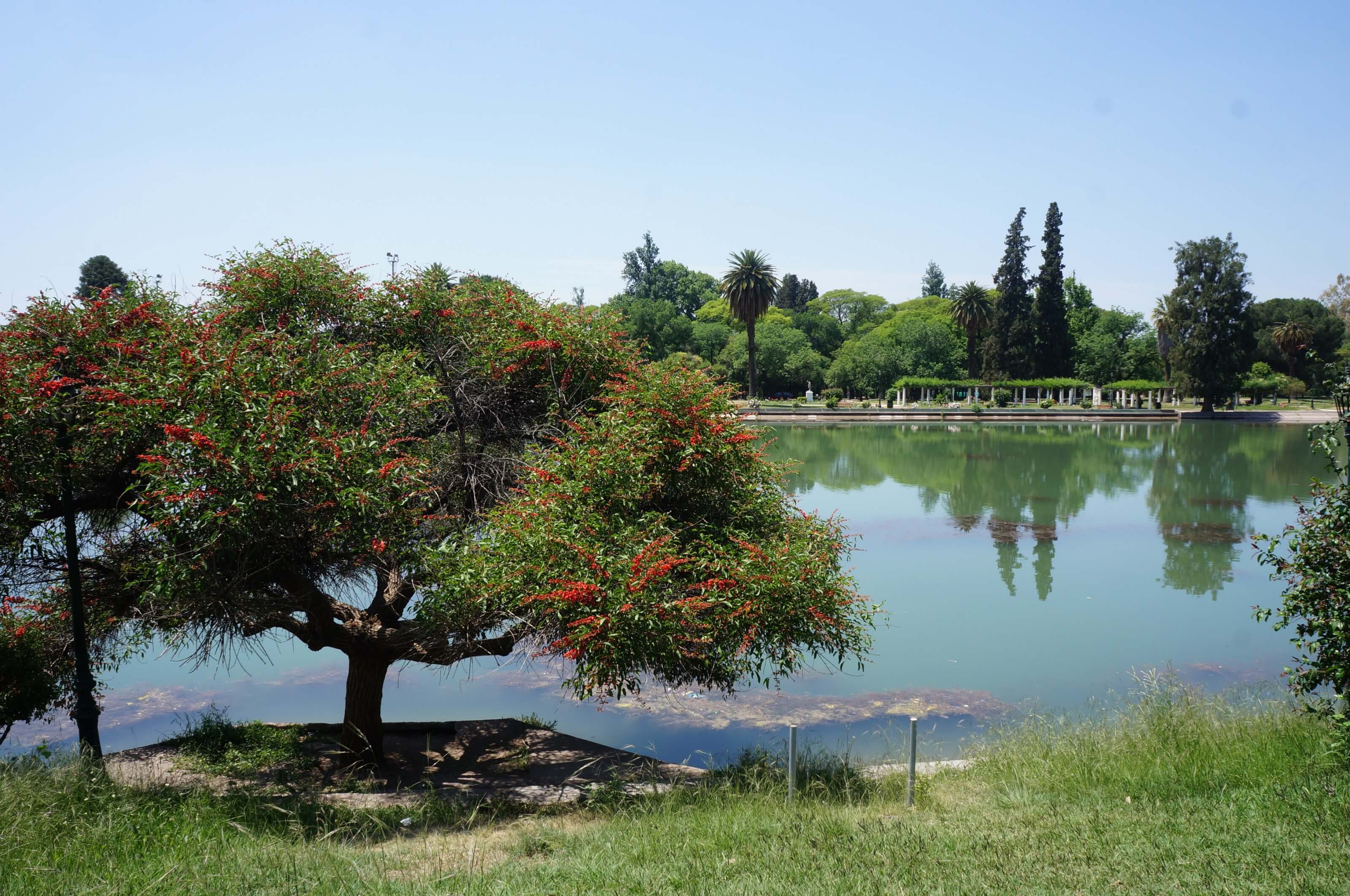
Join the discussion